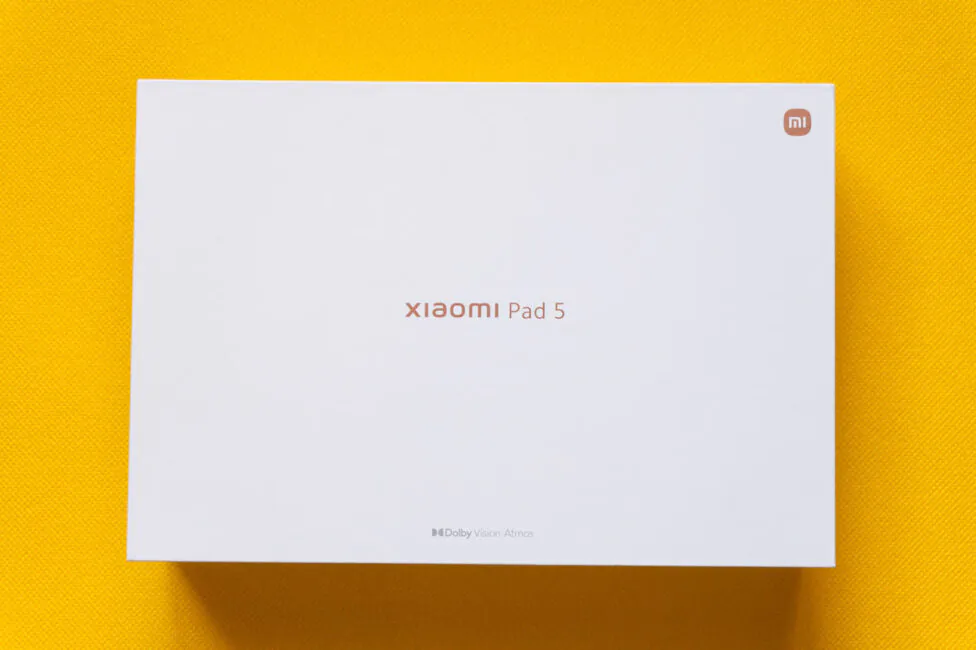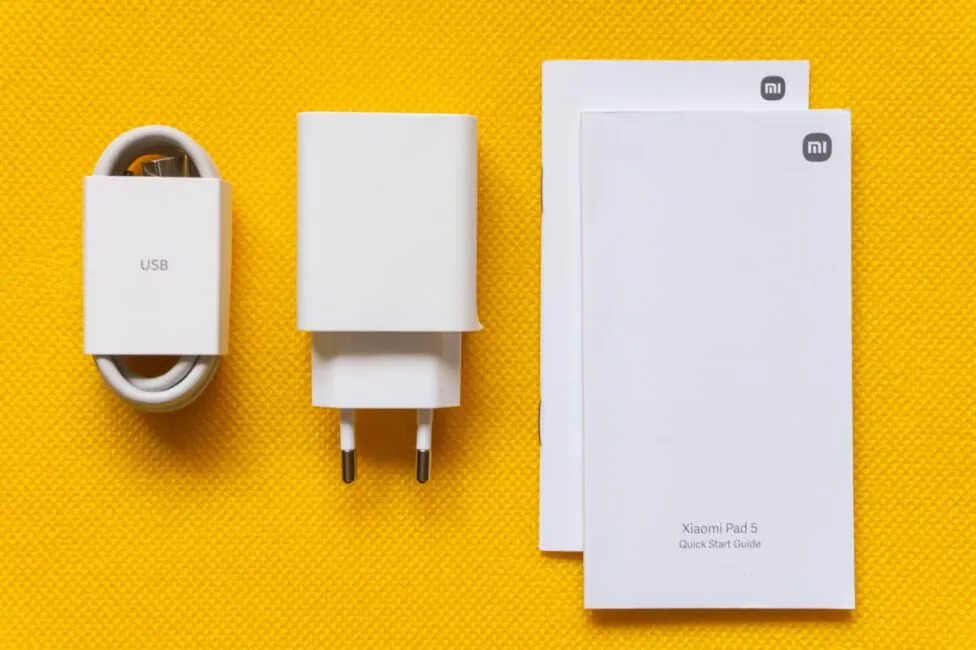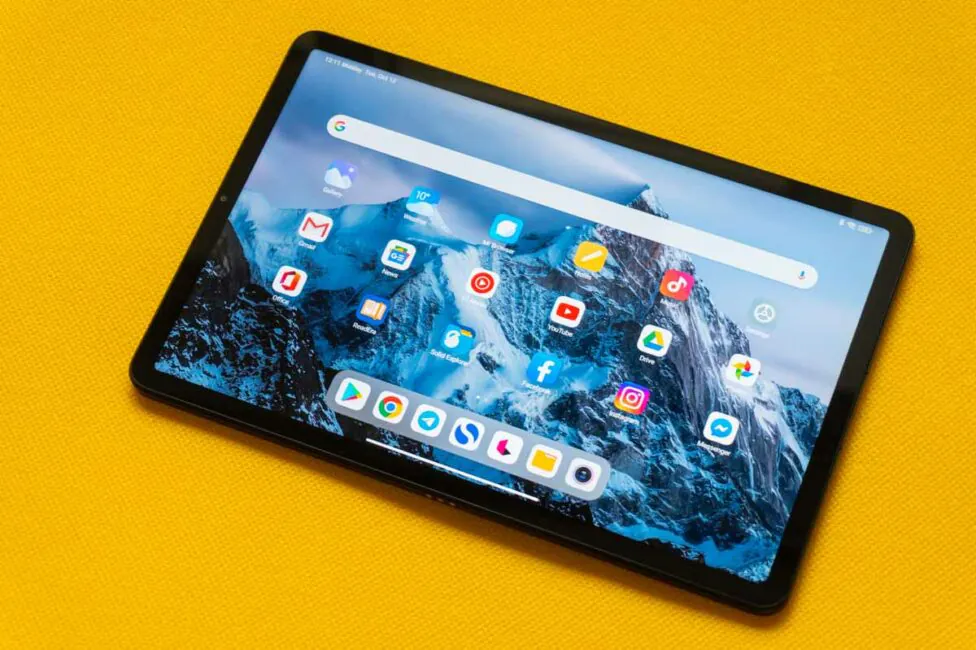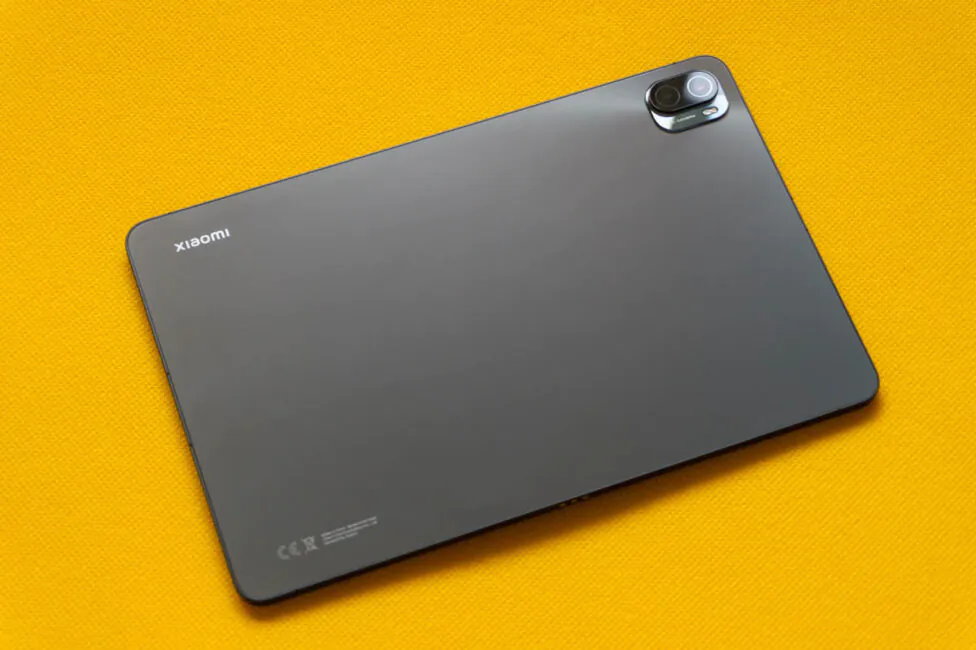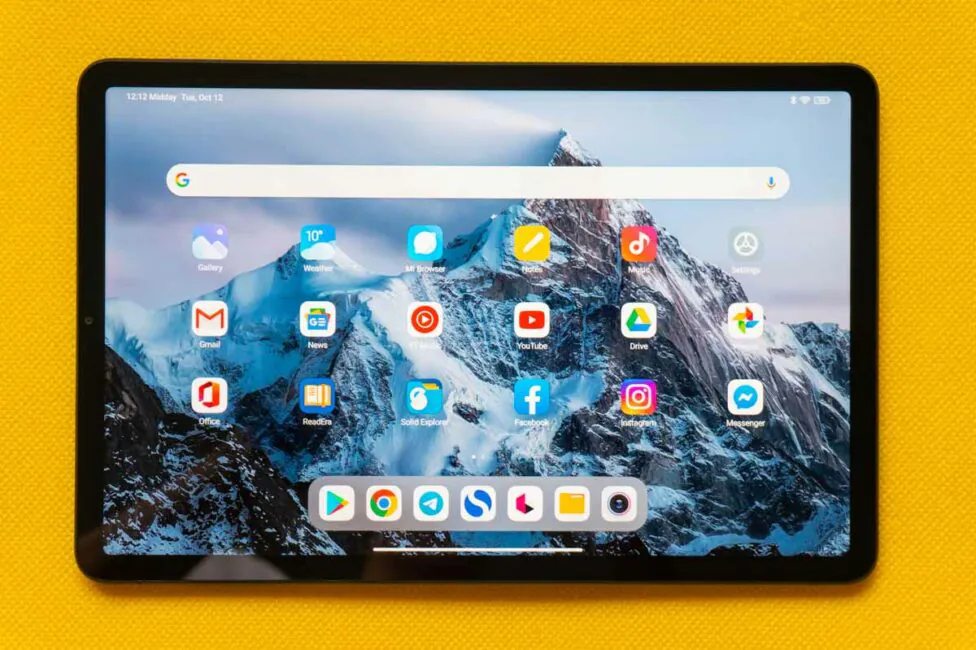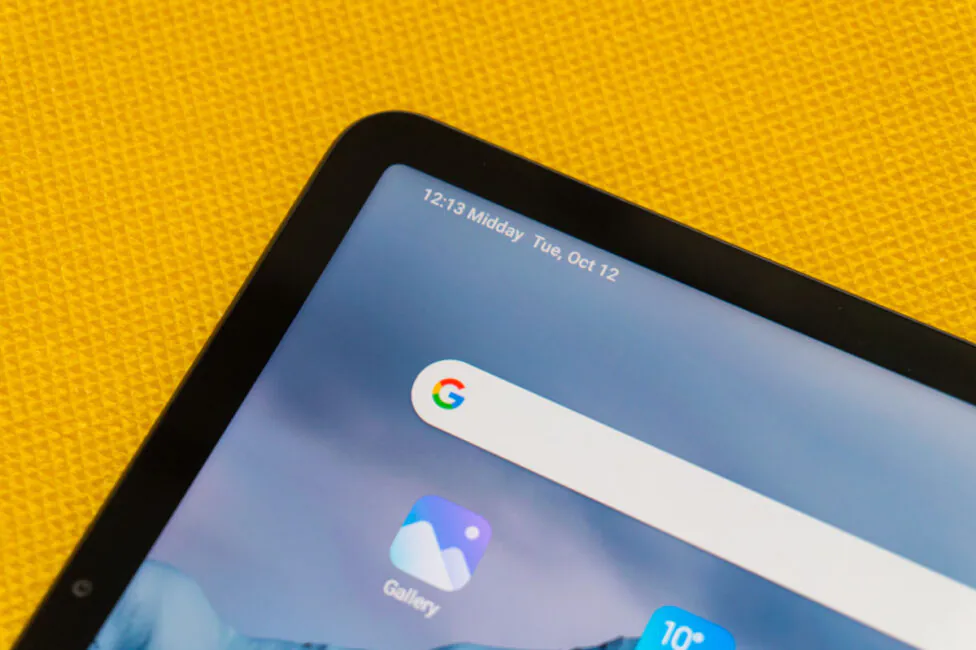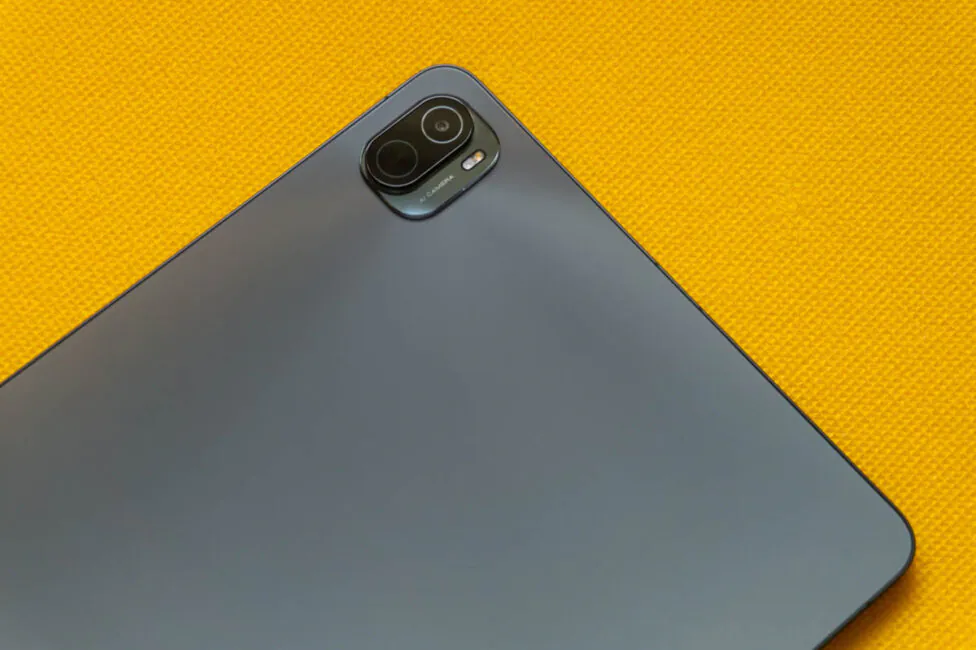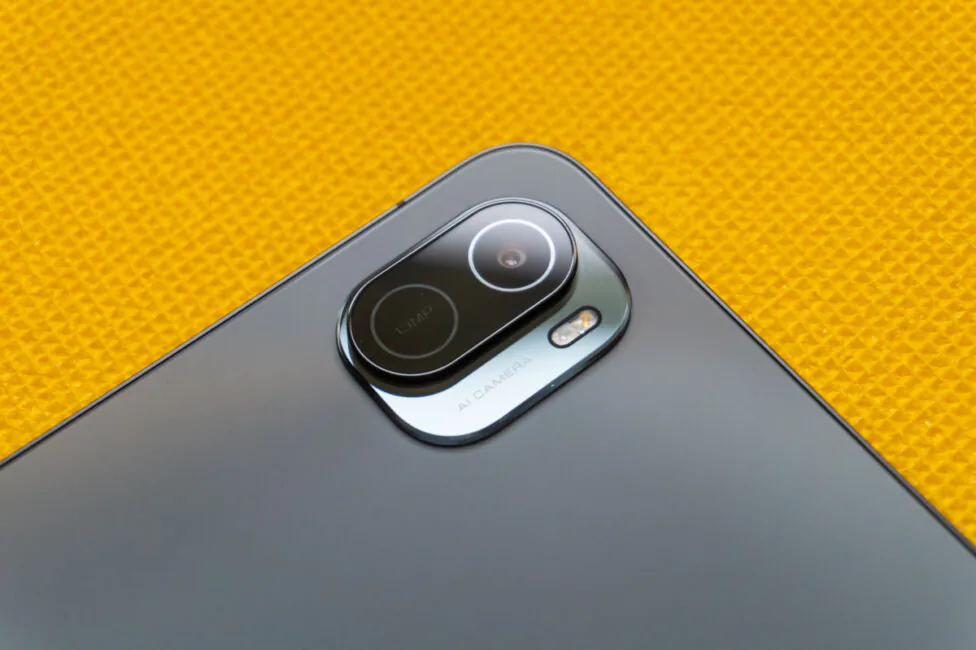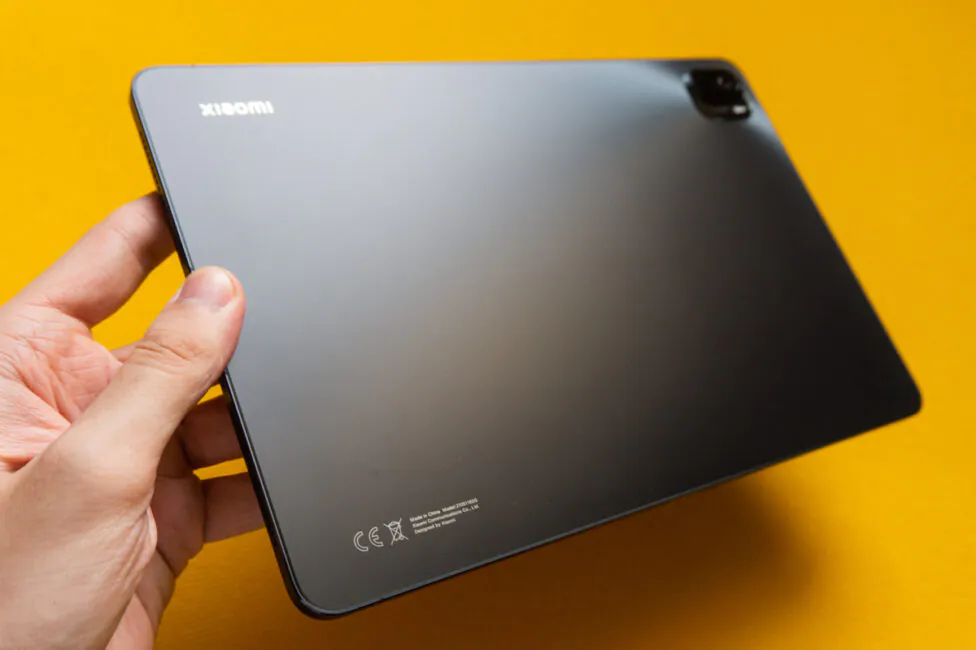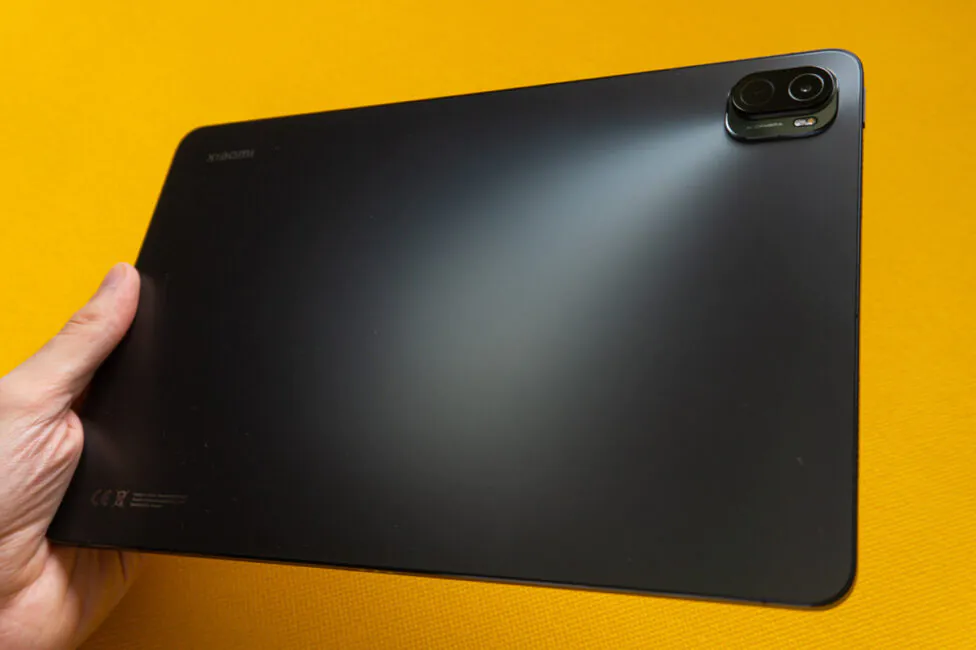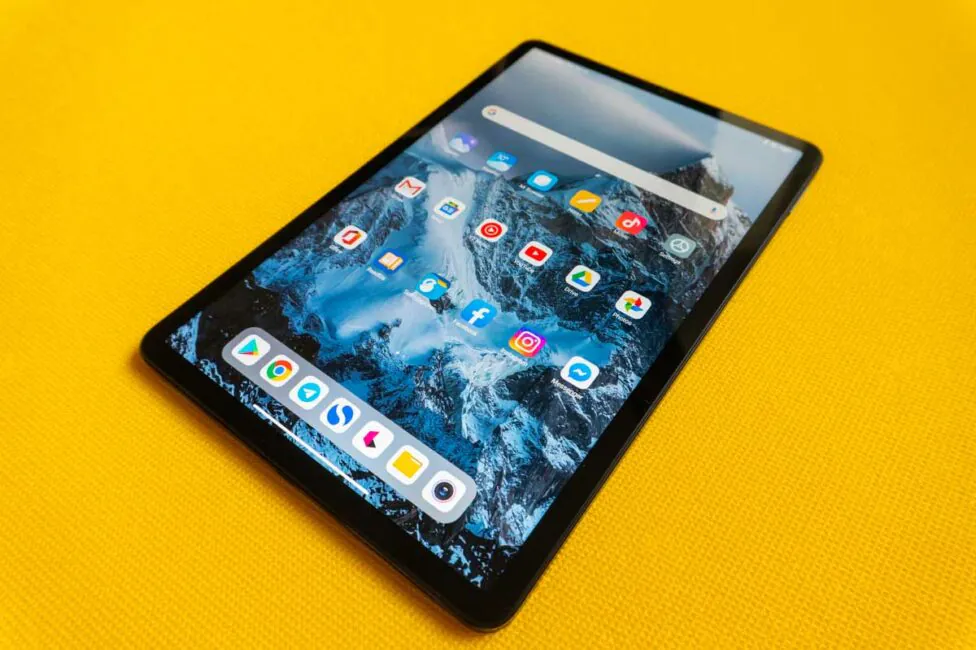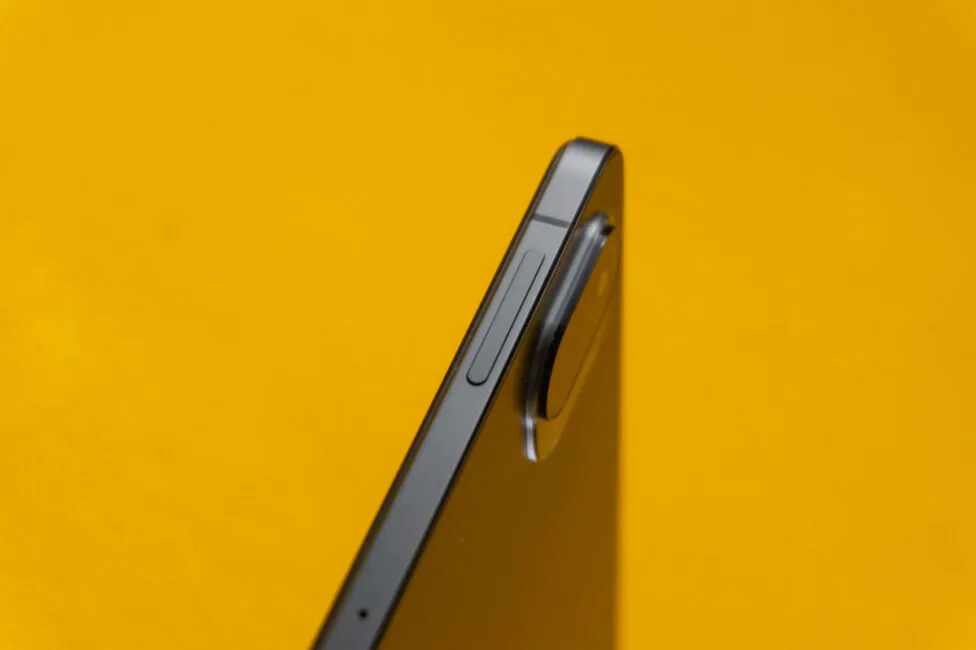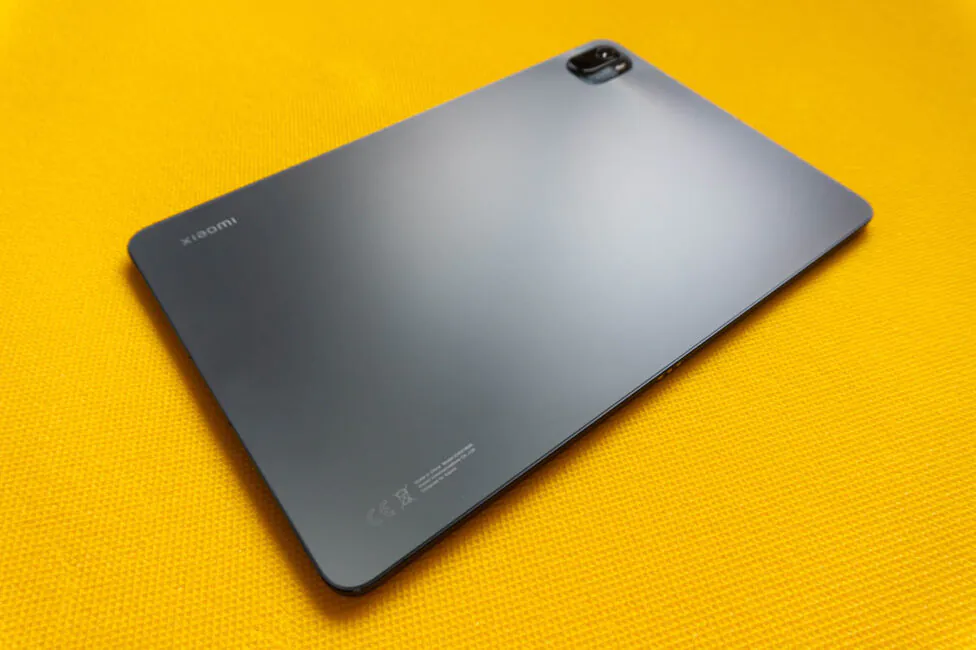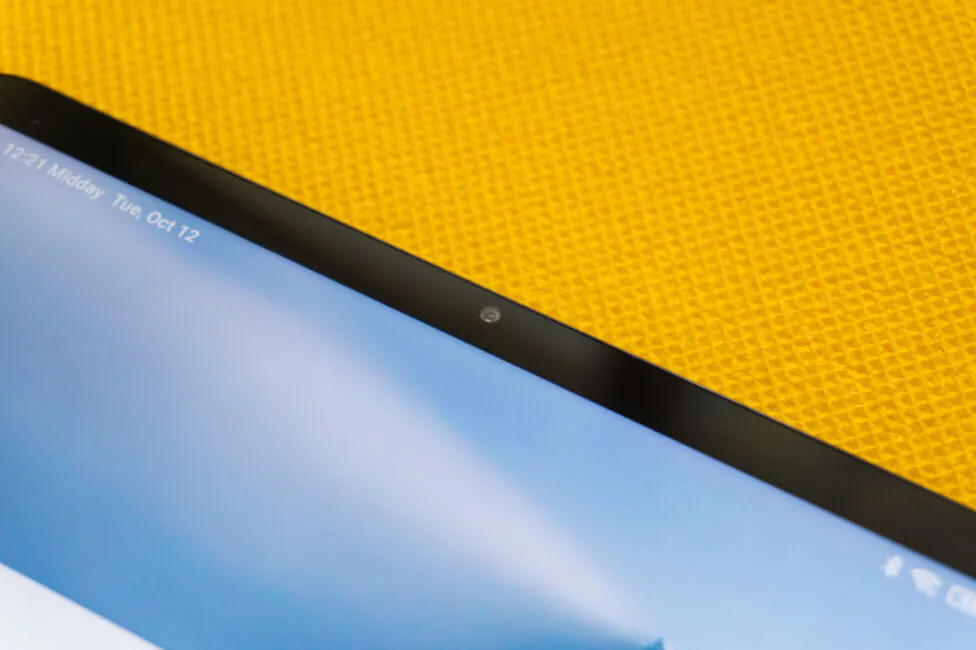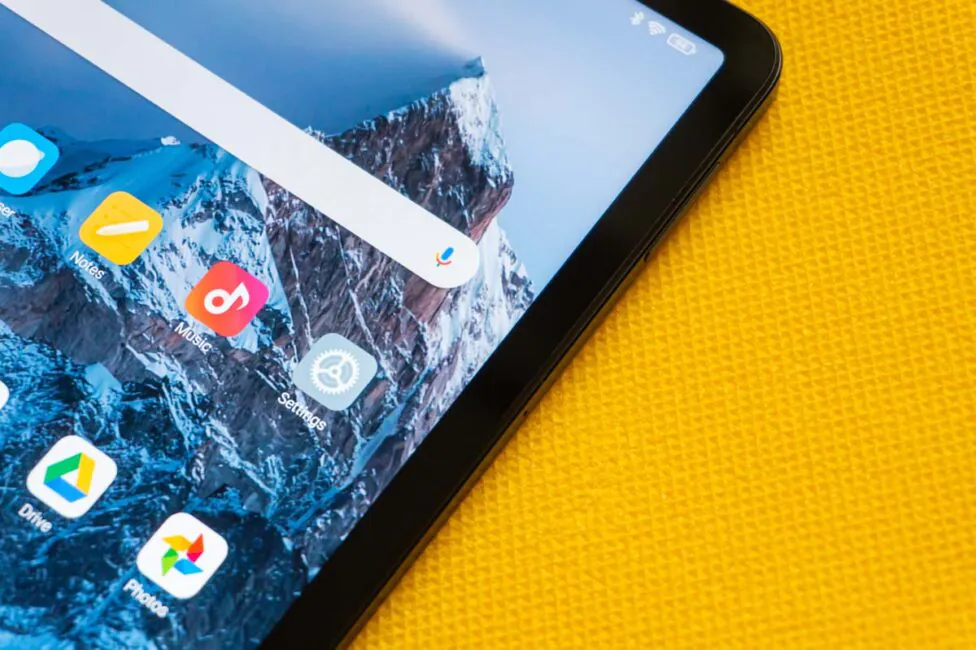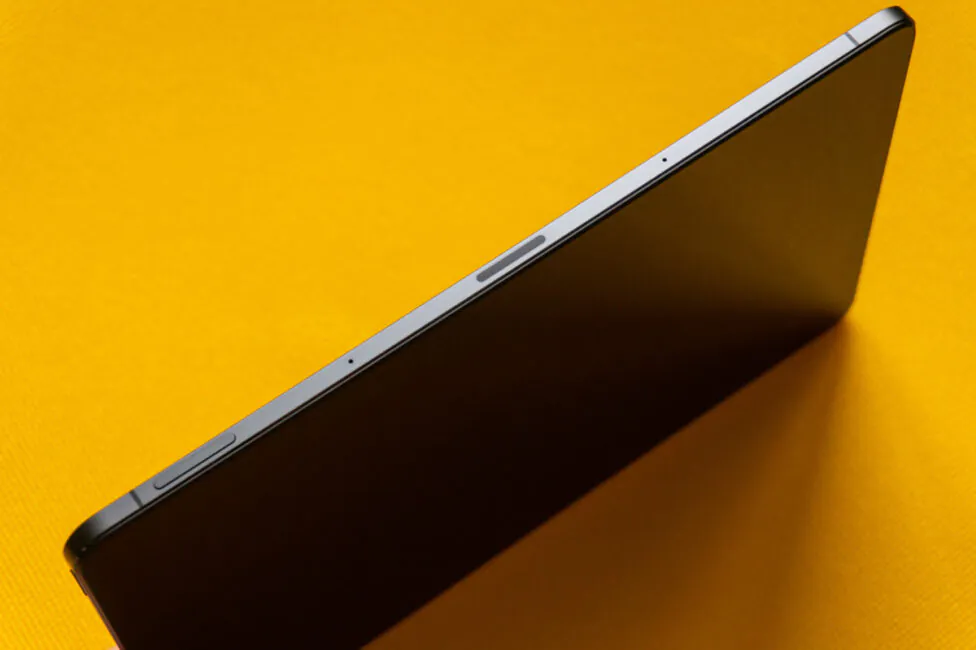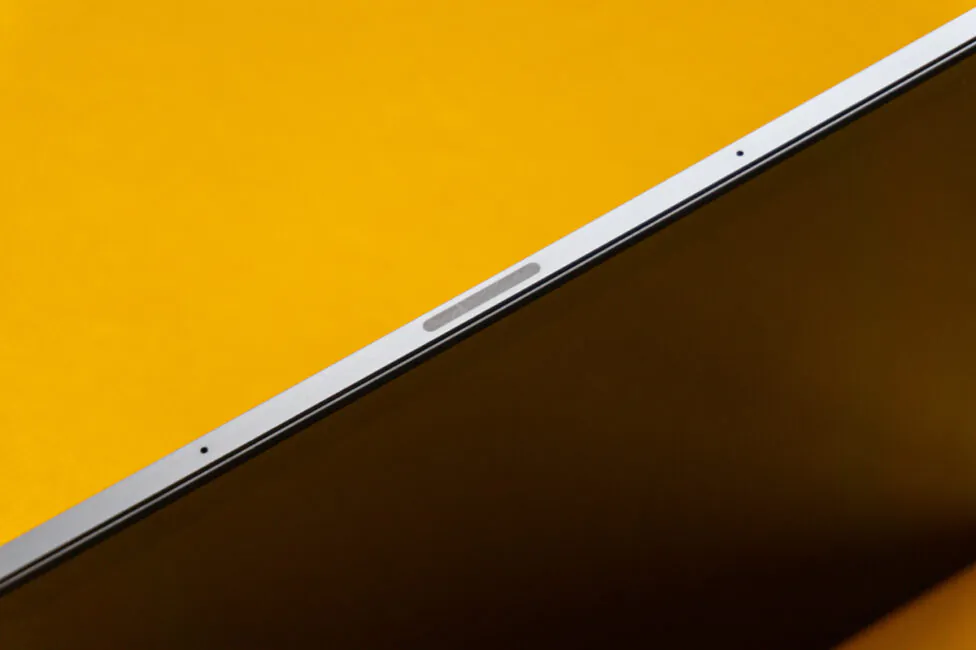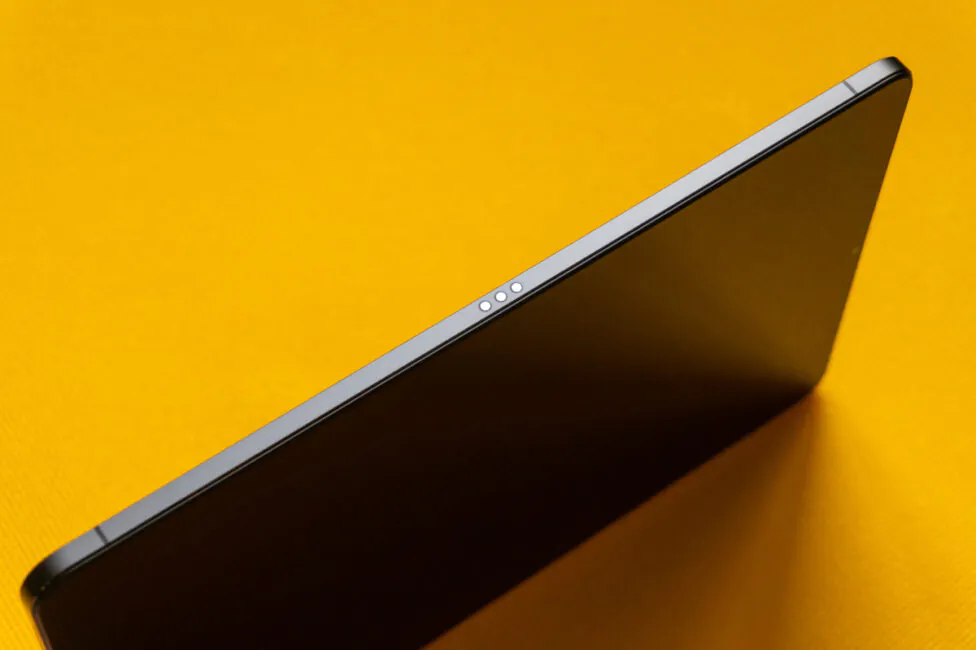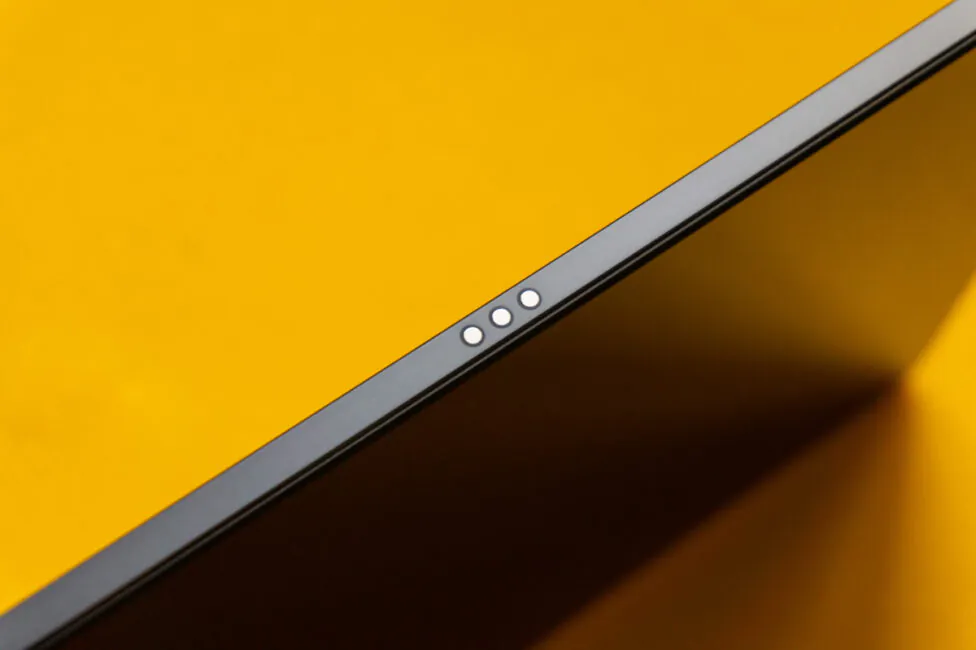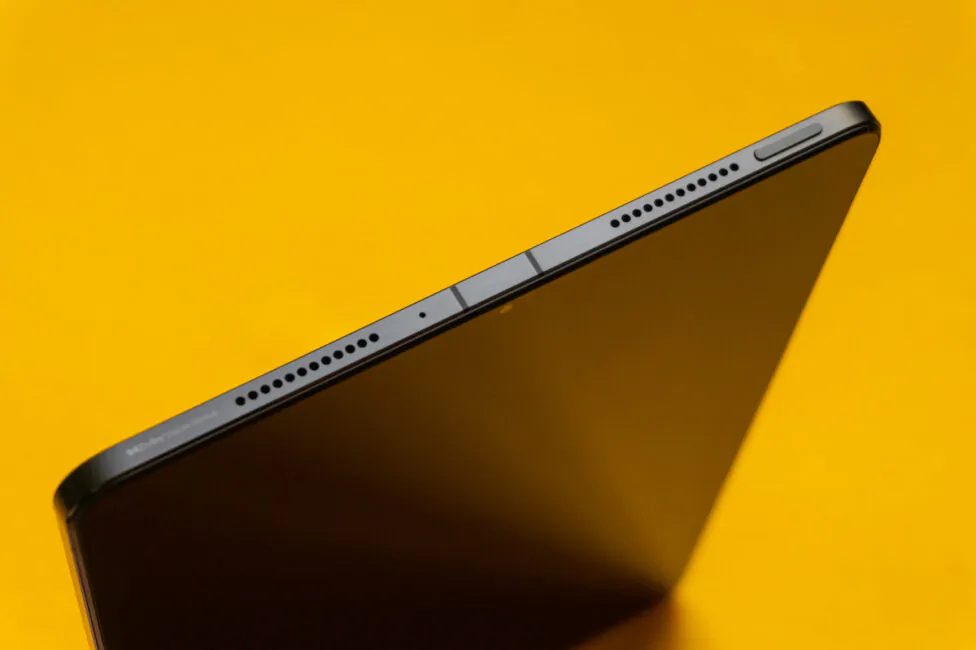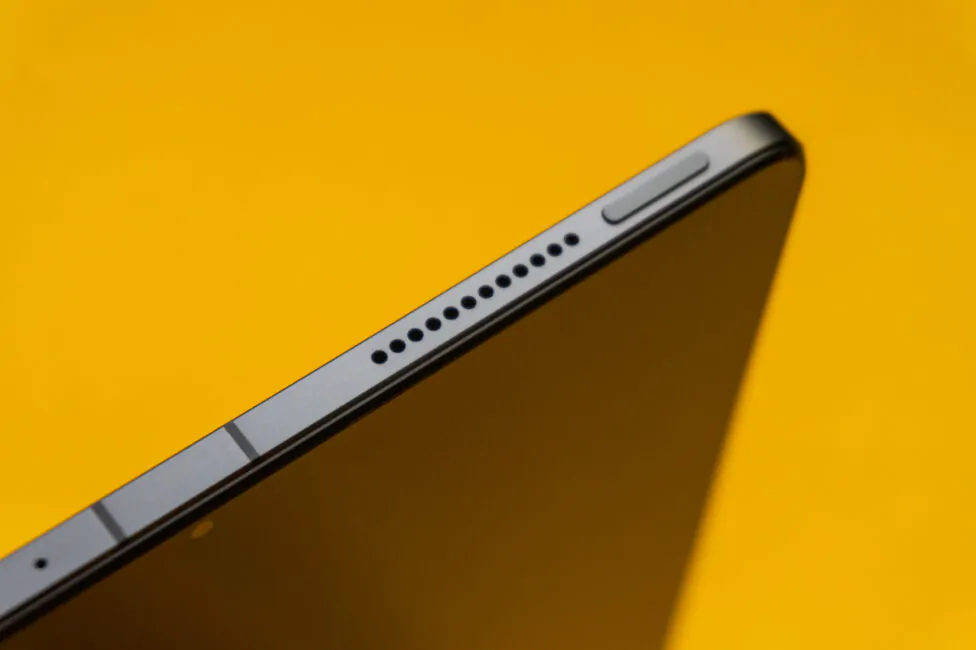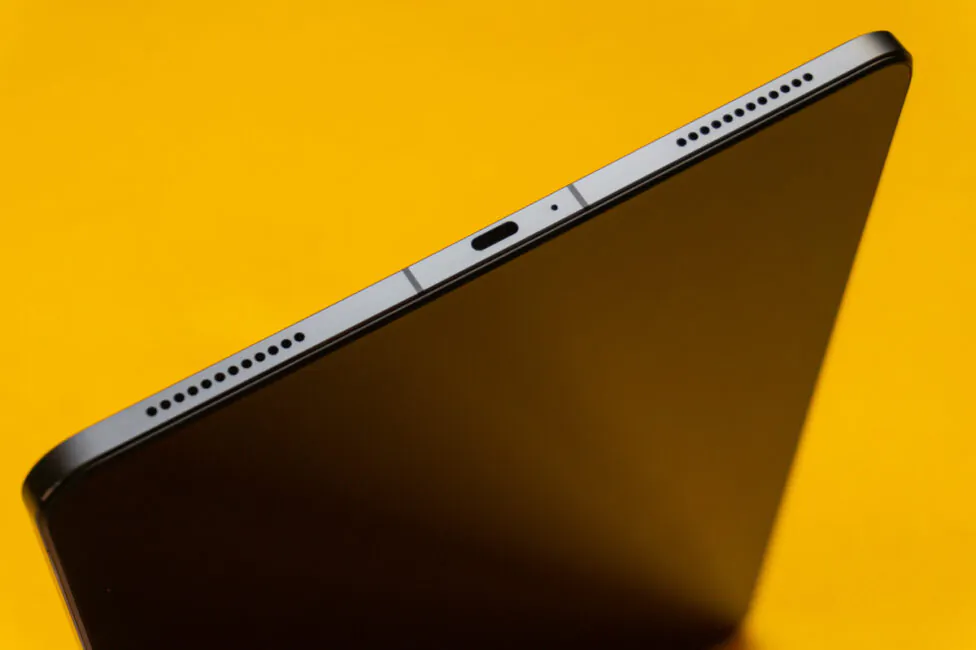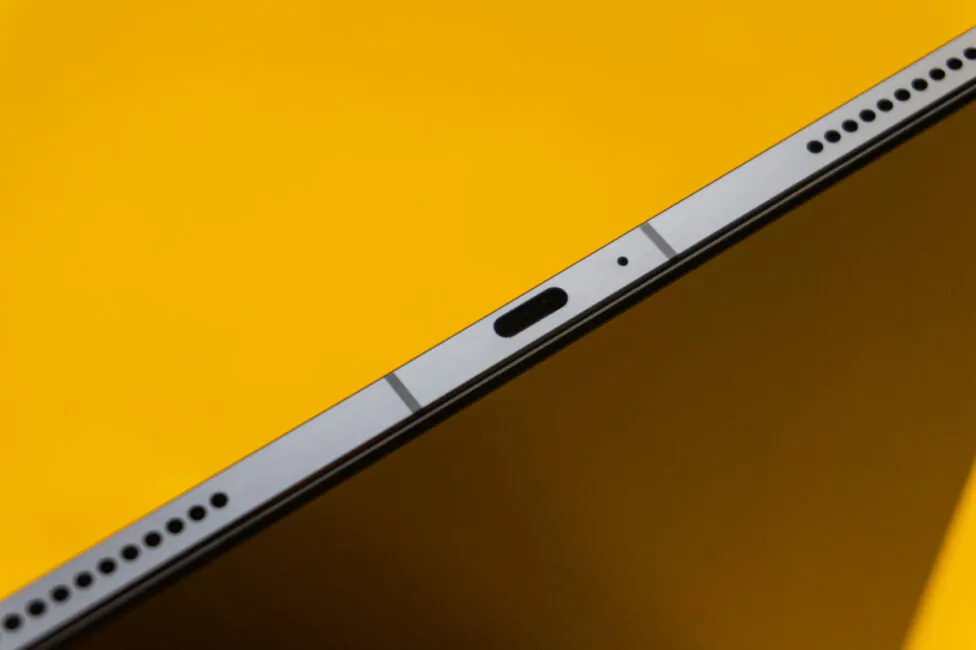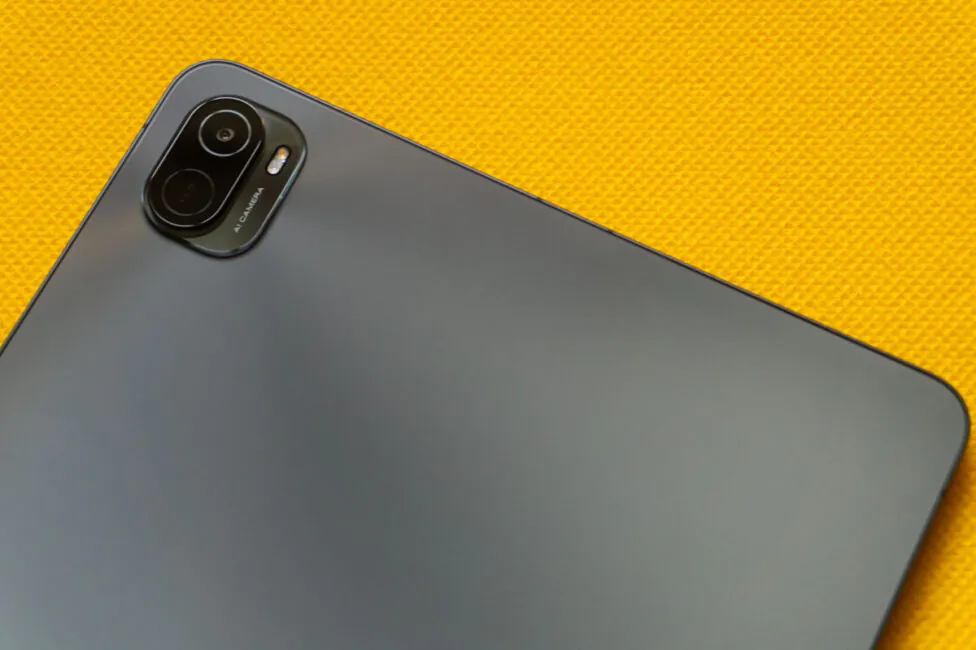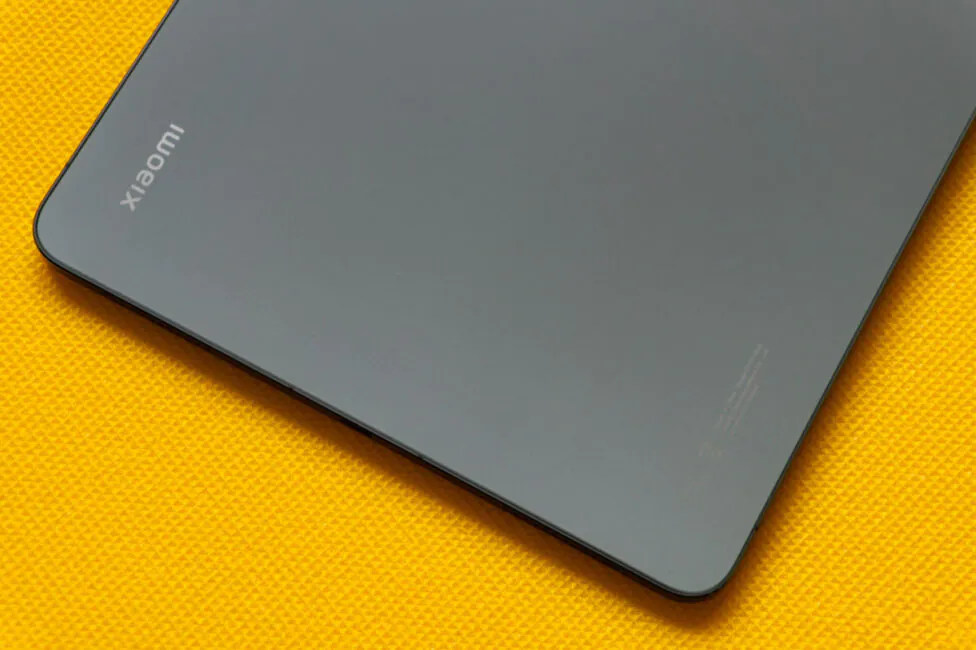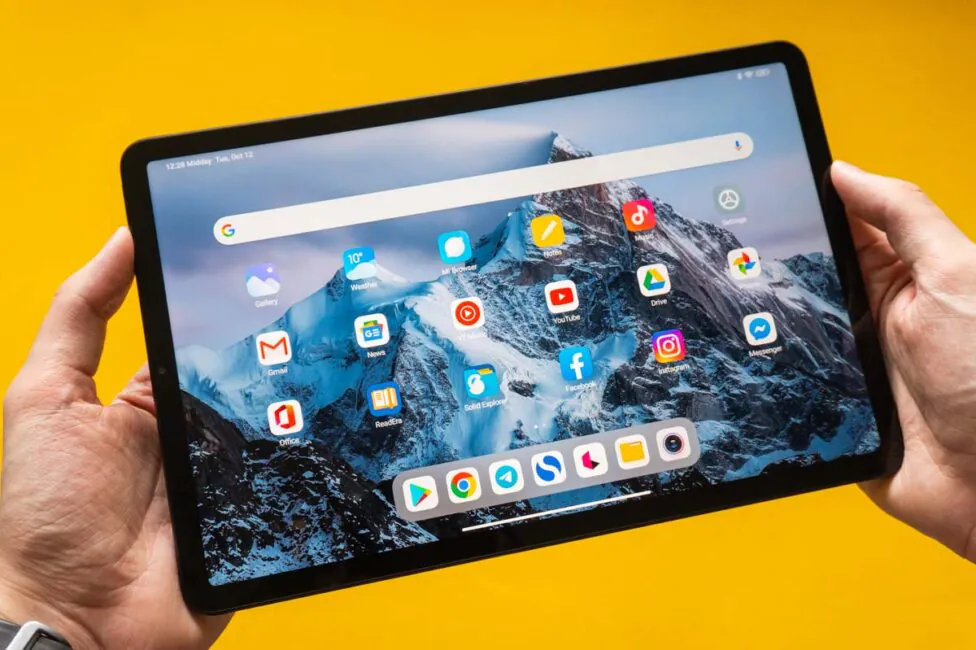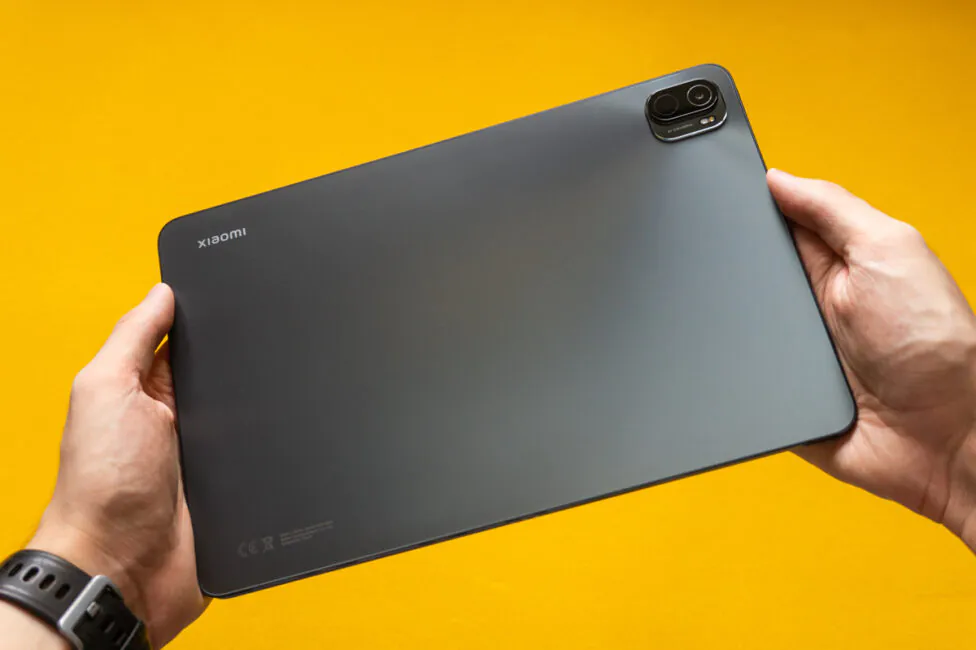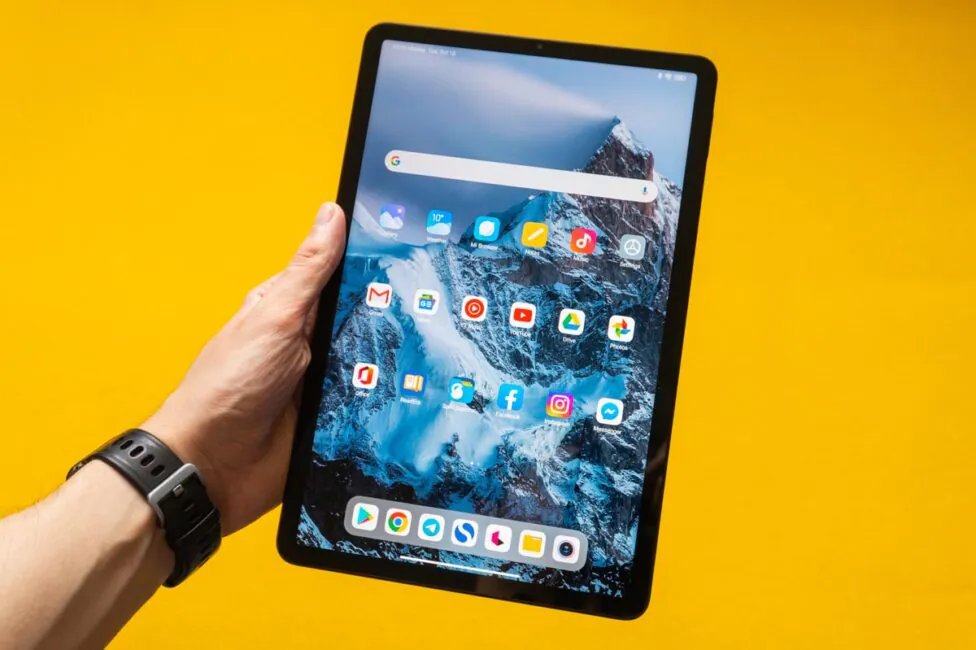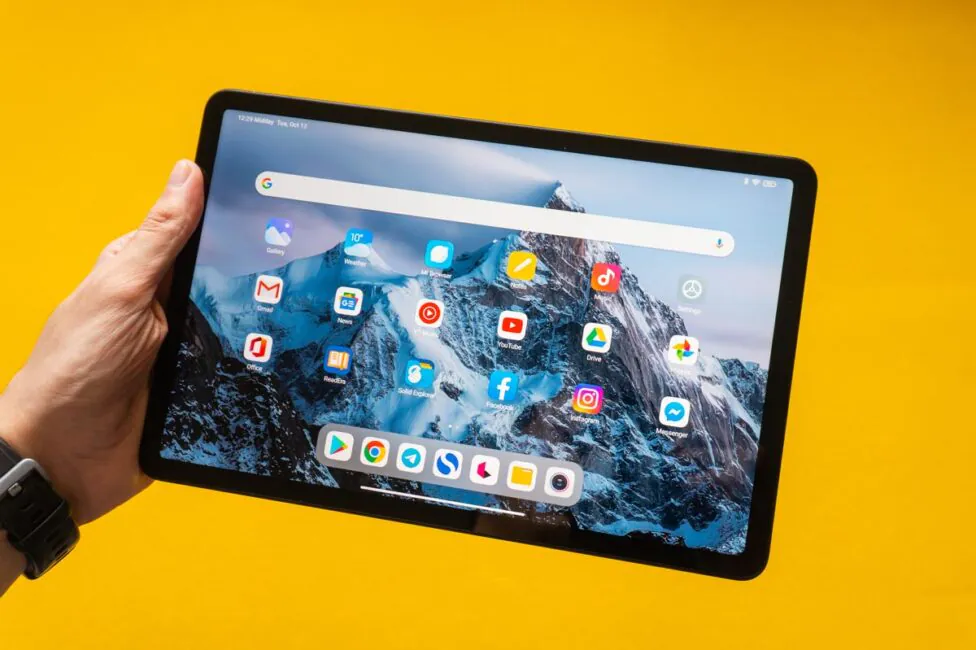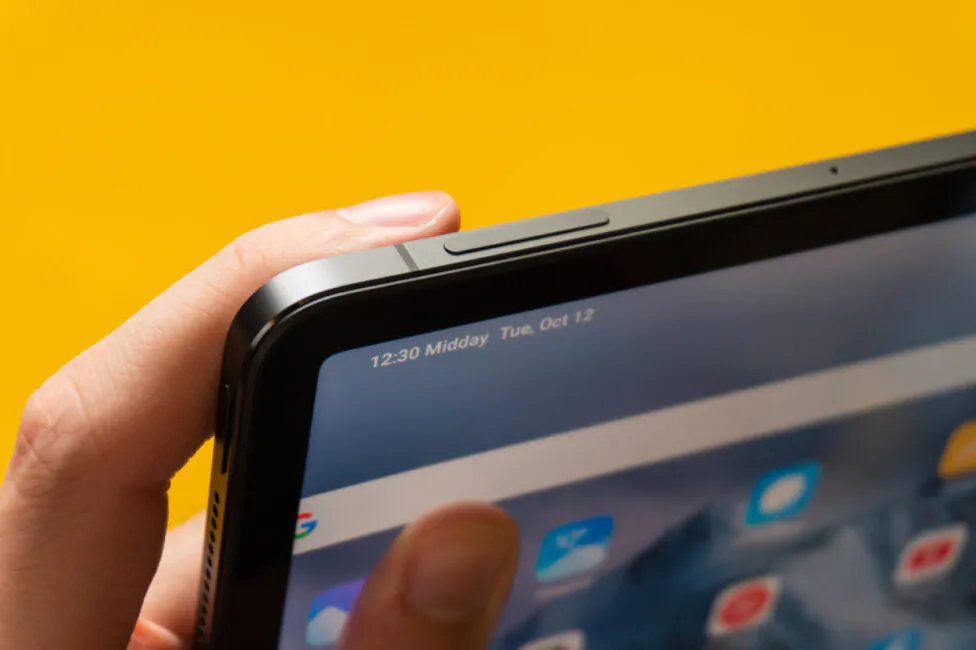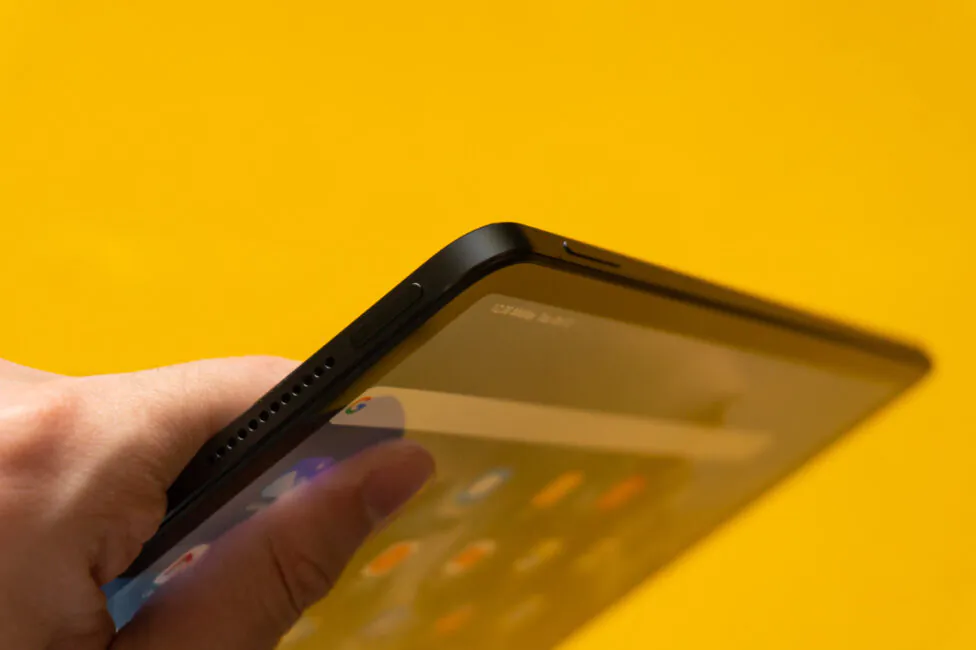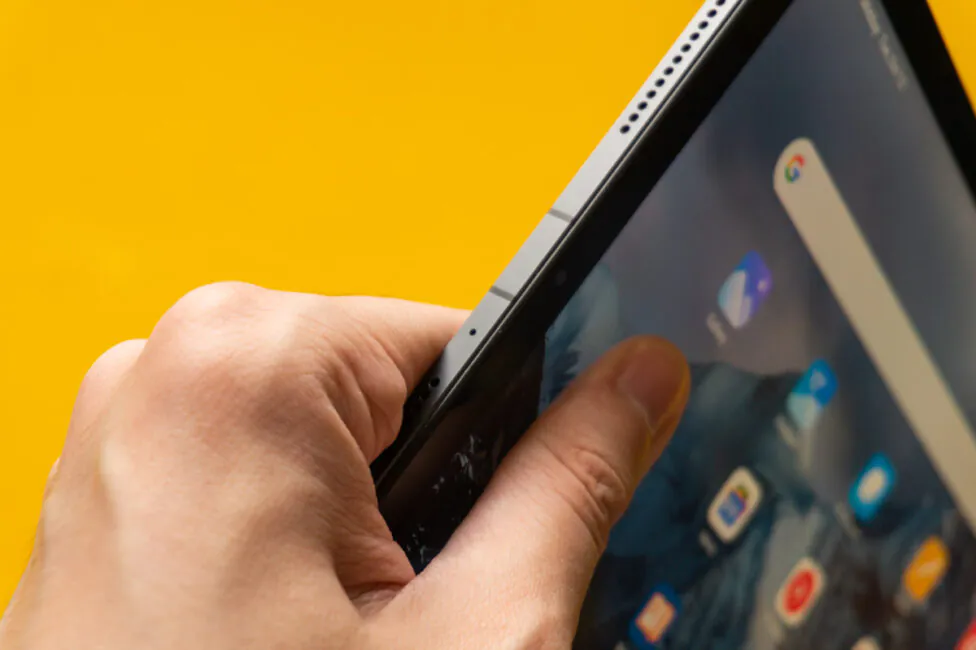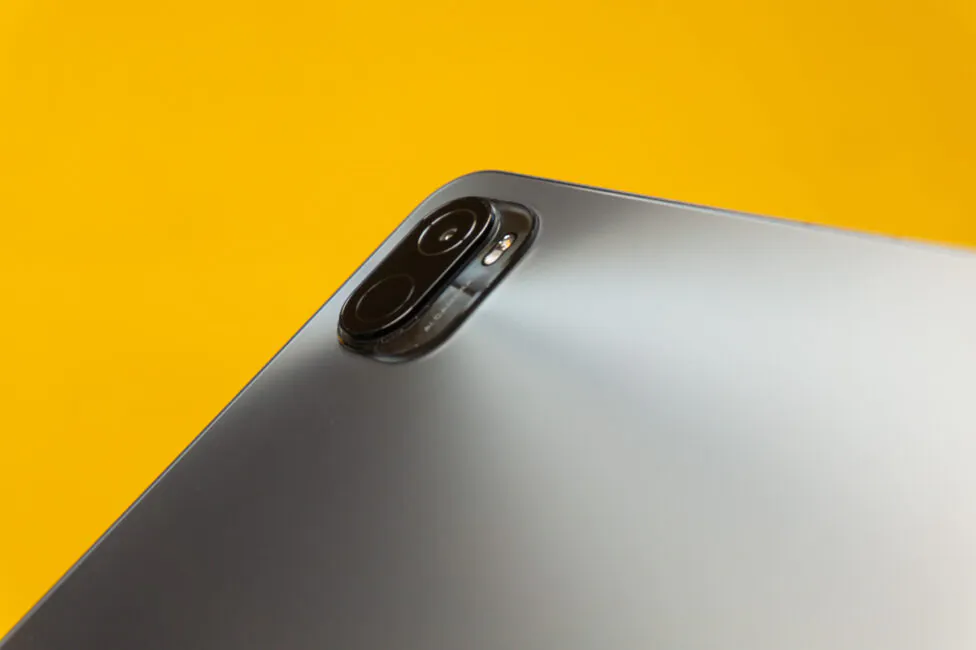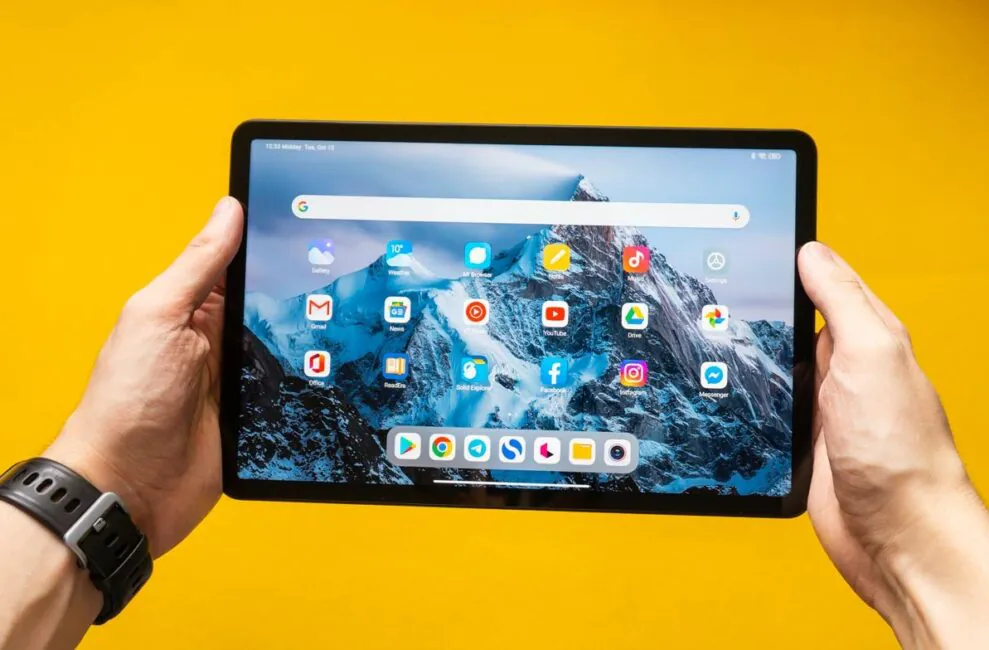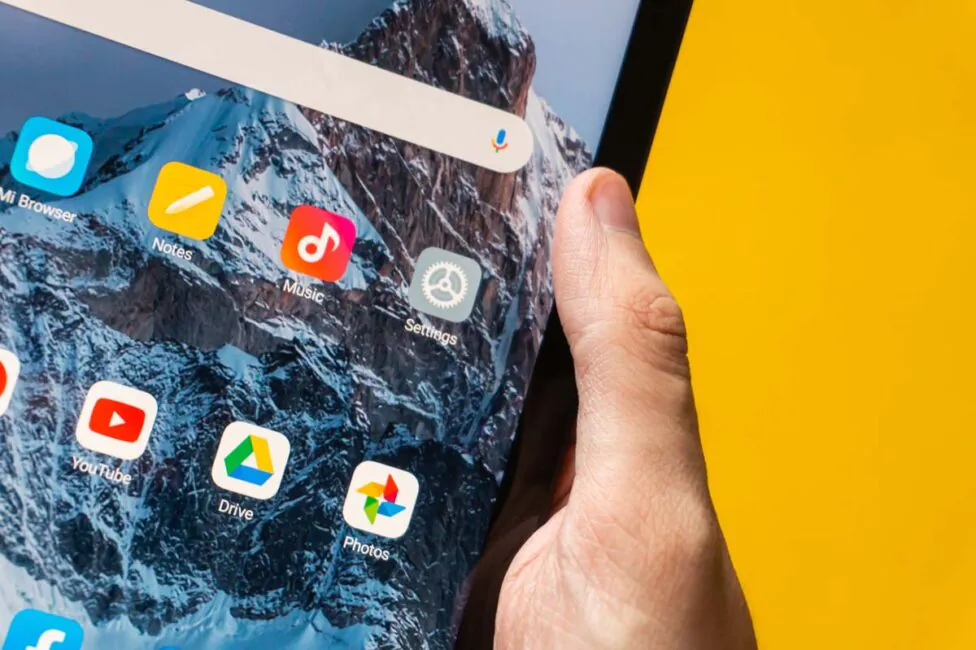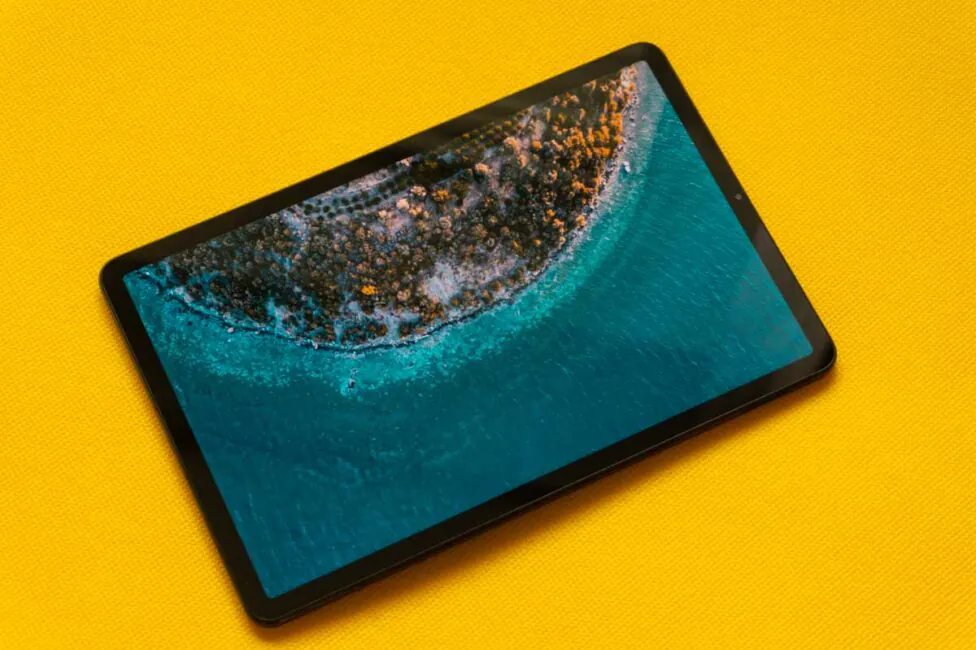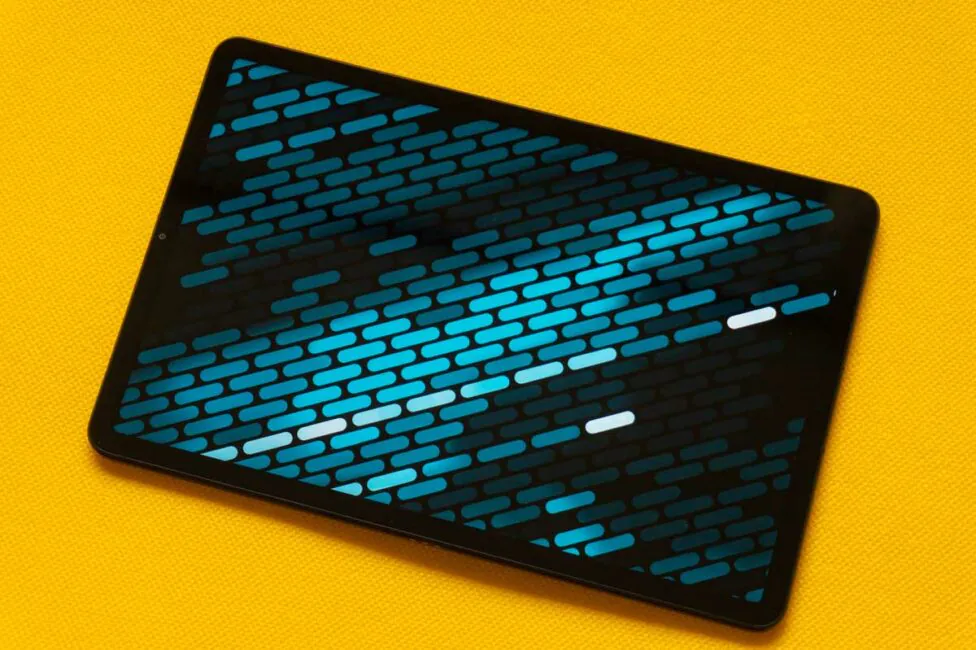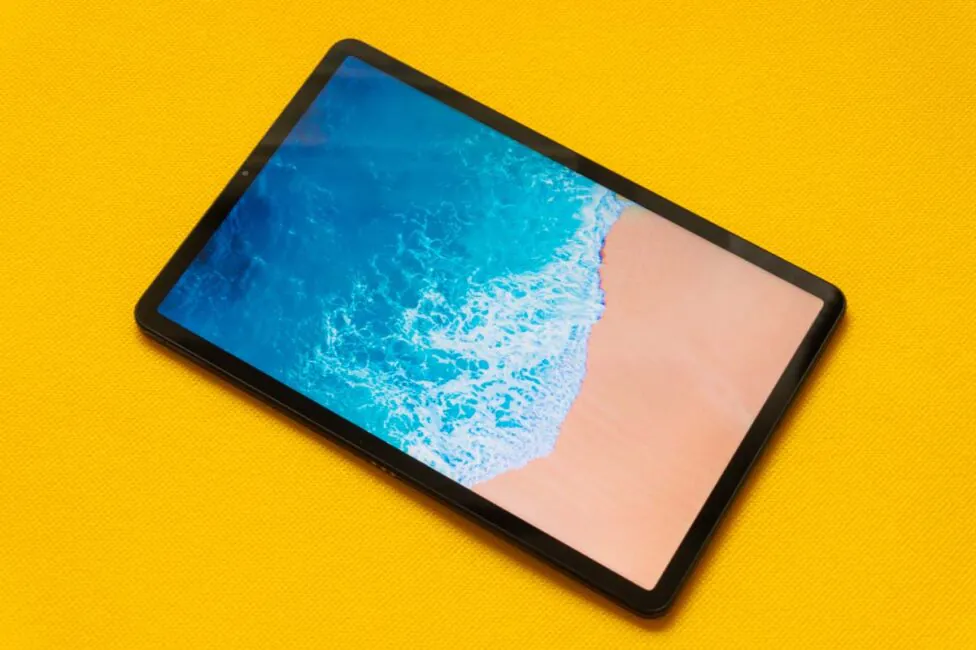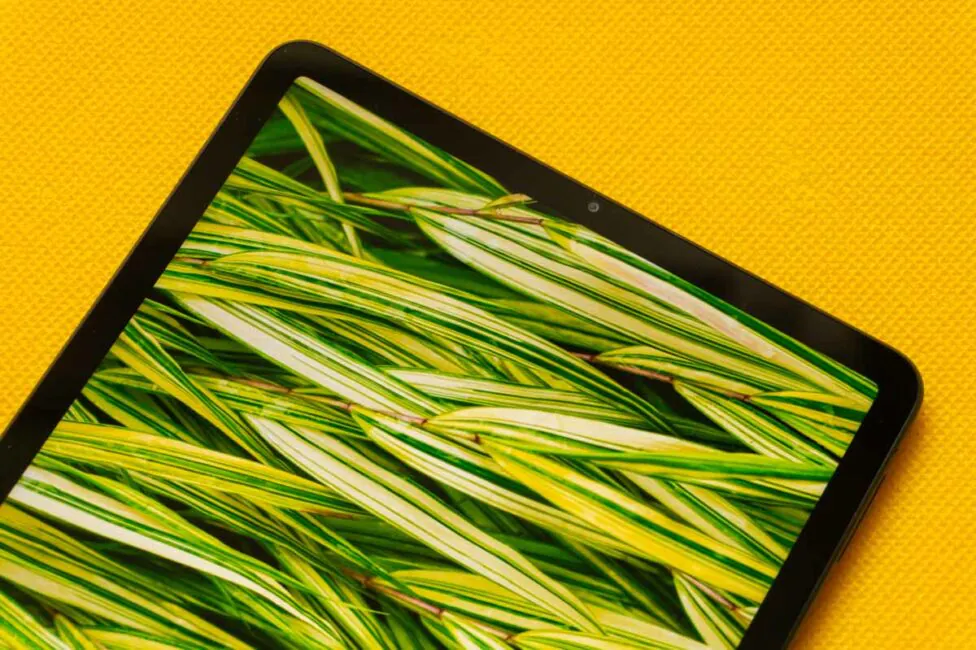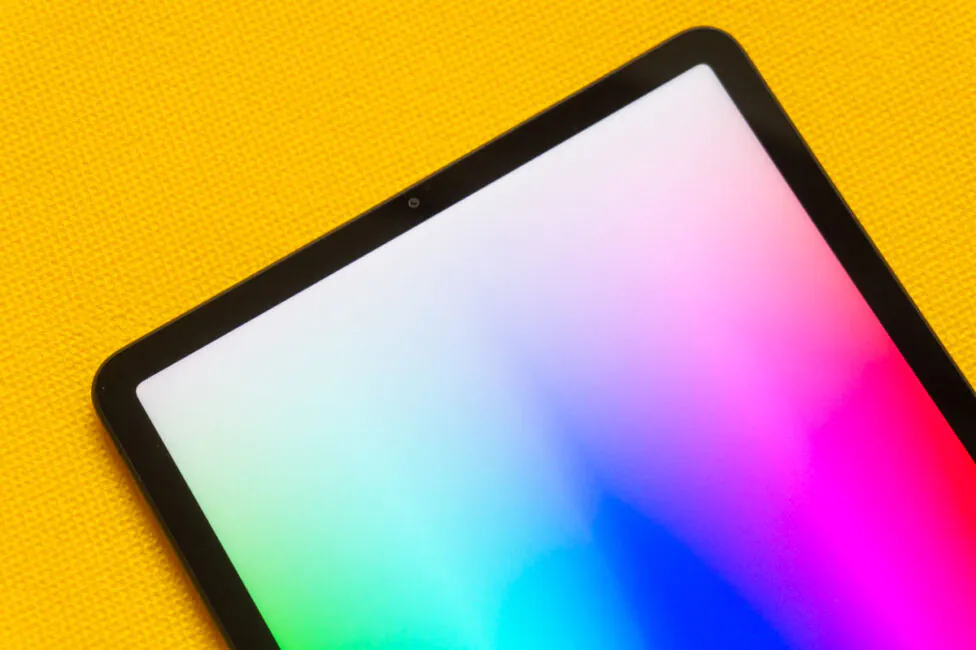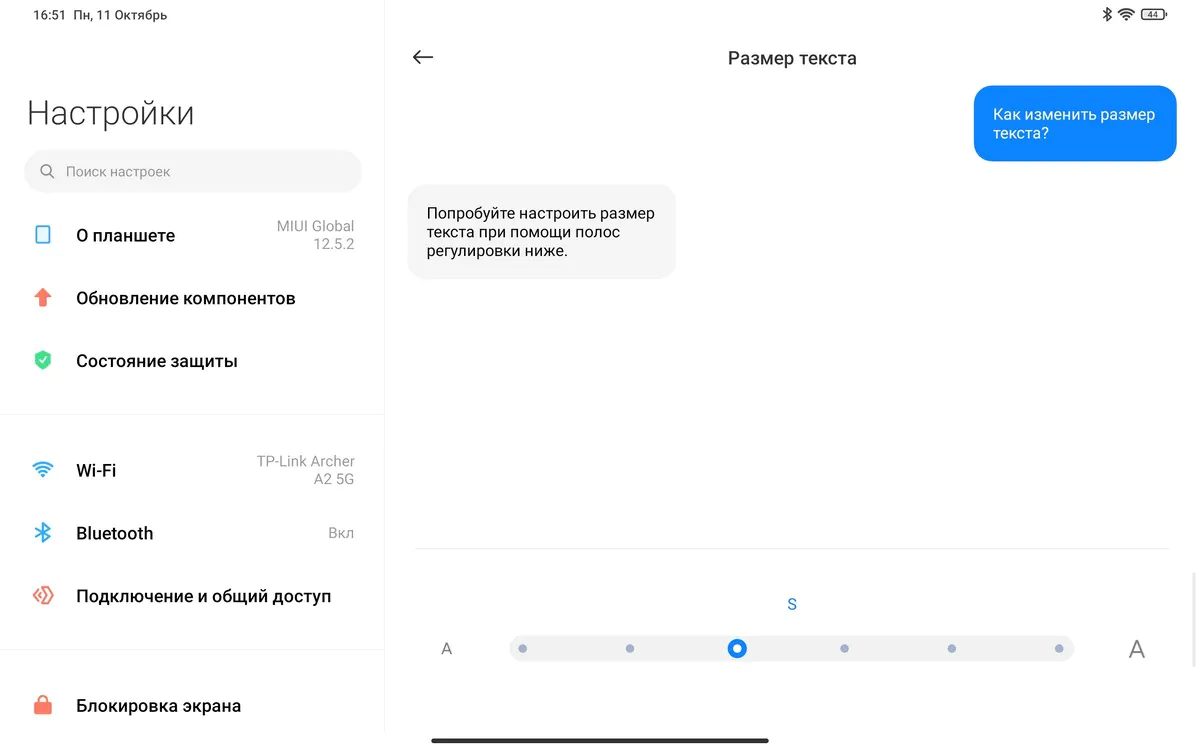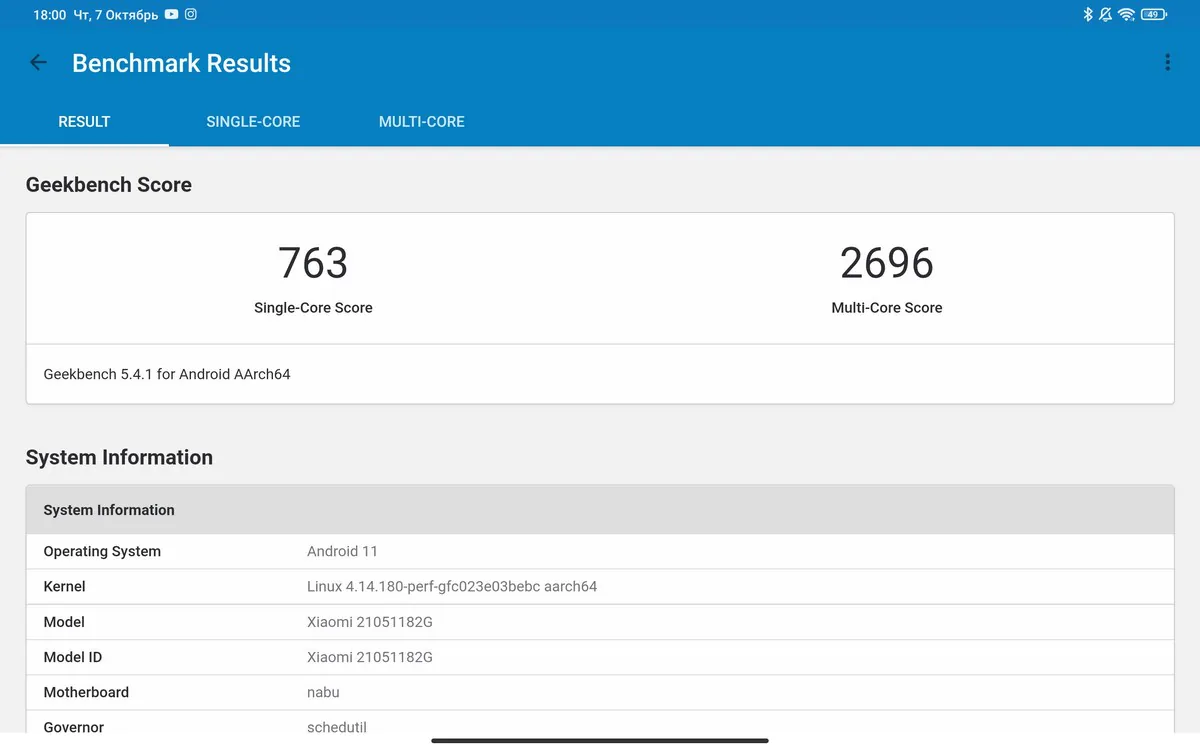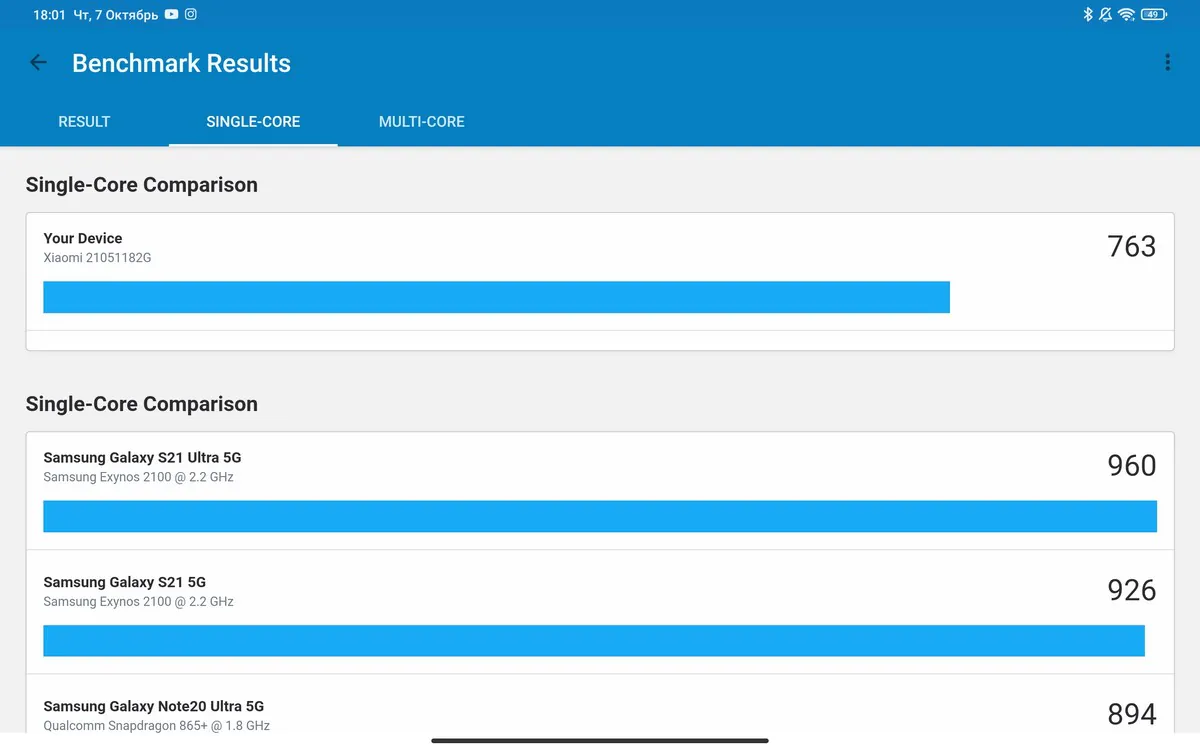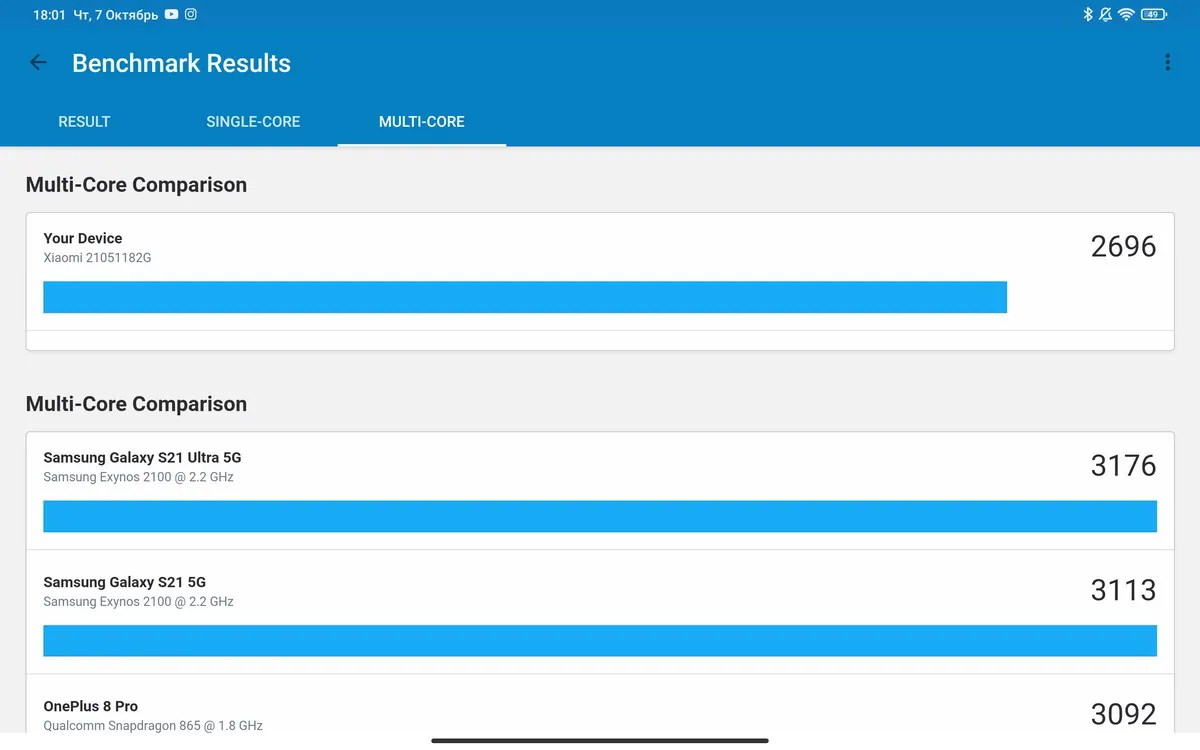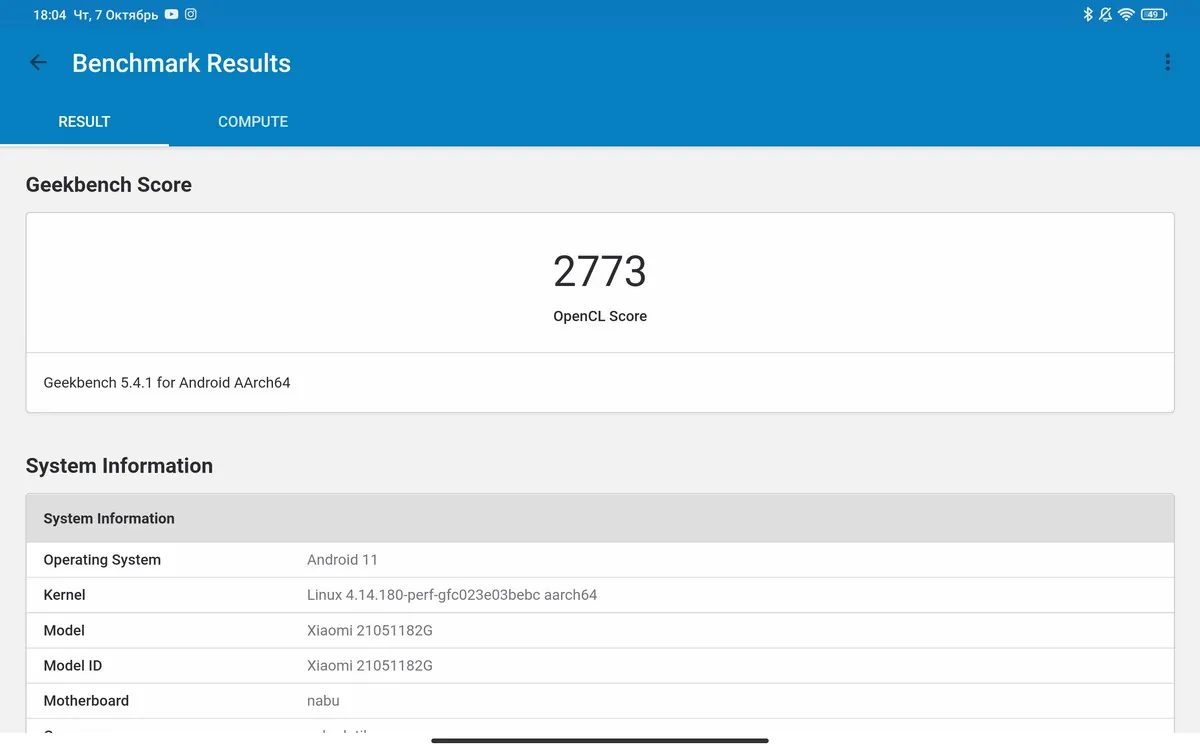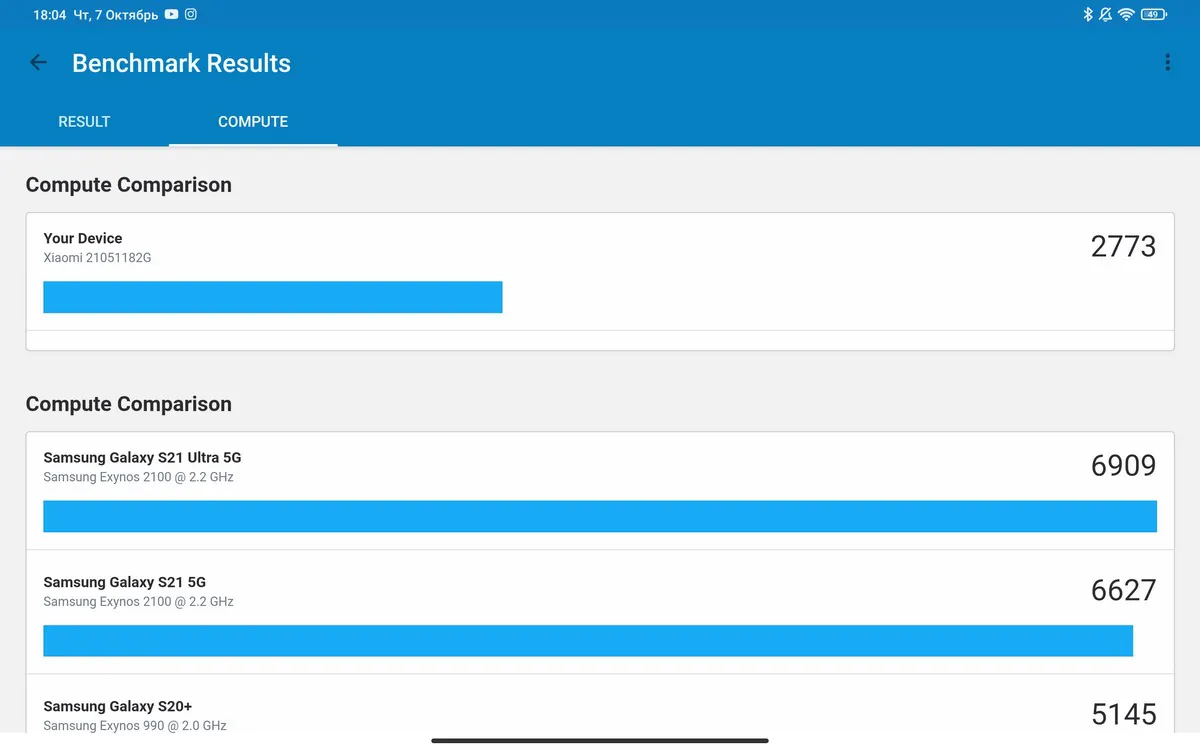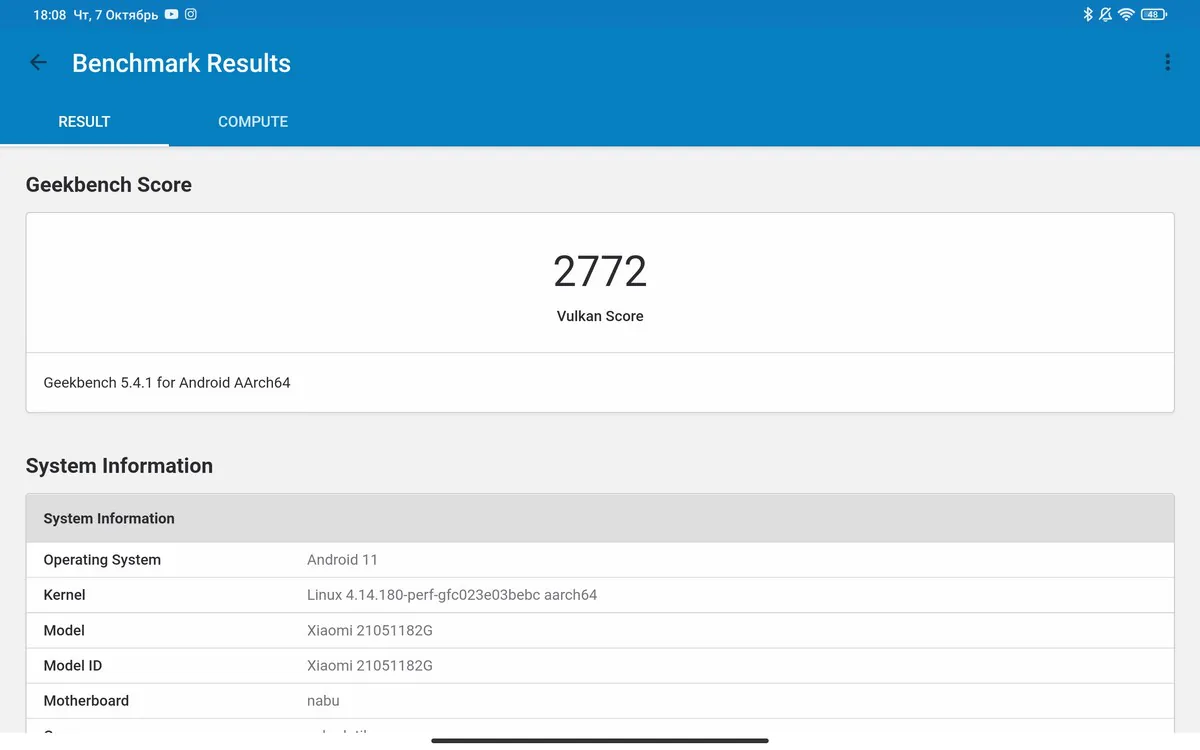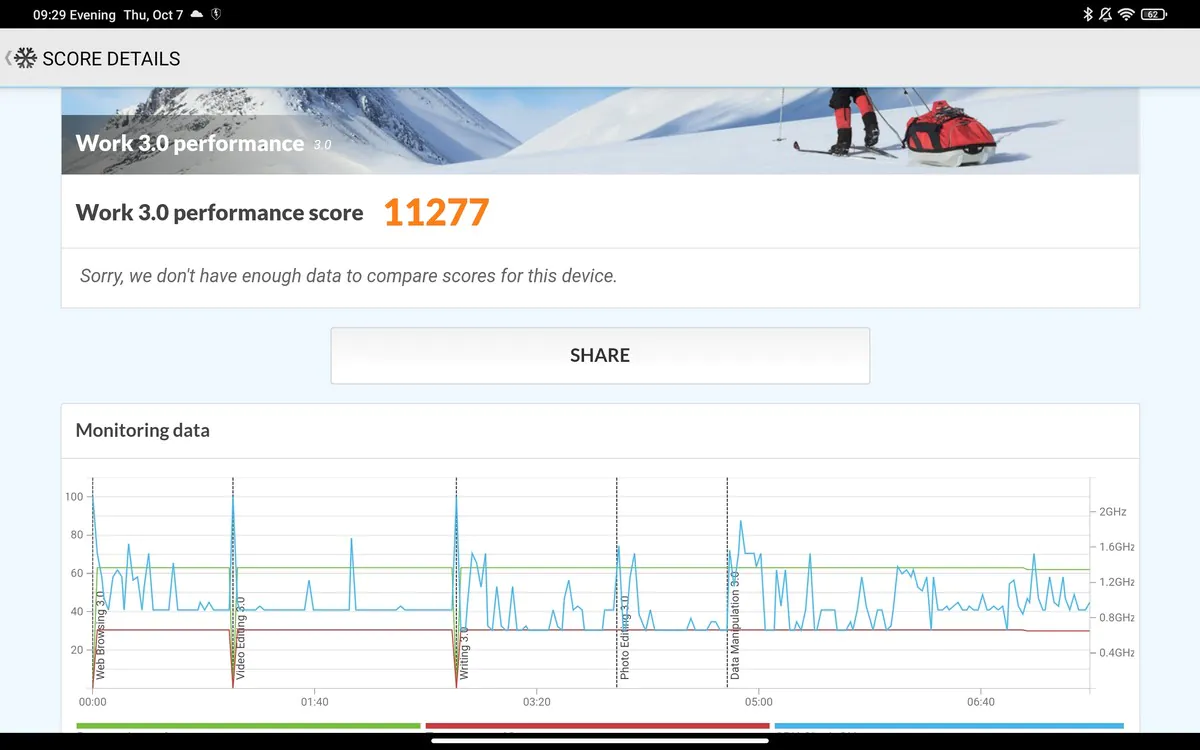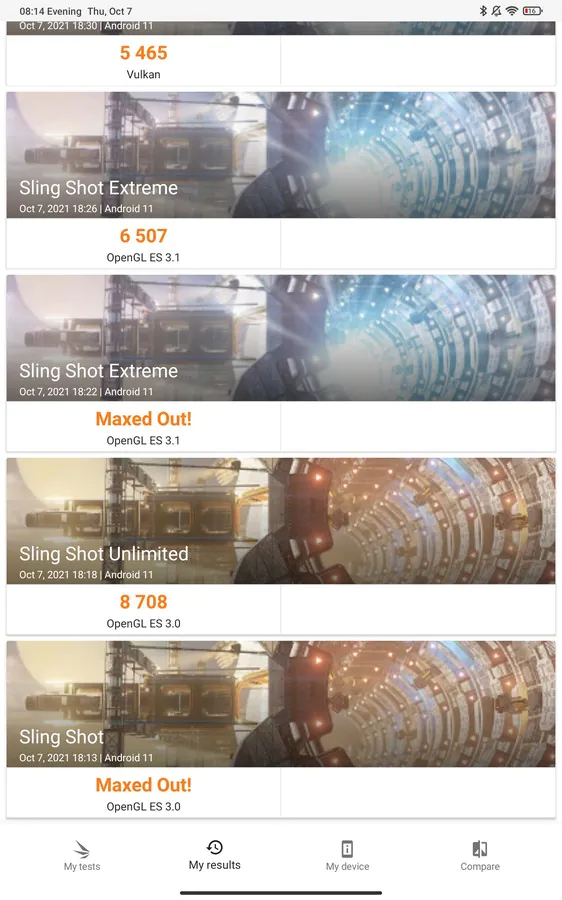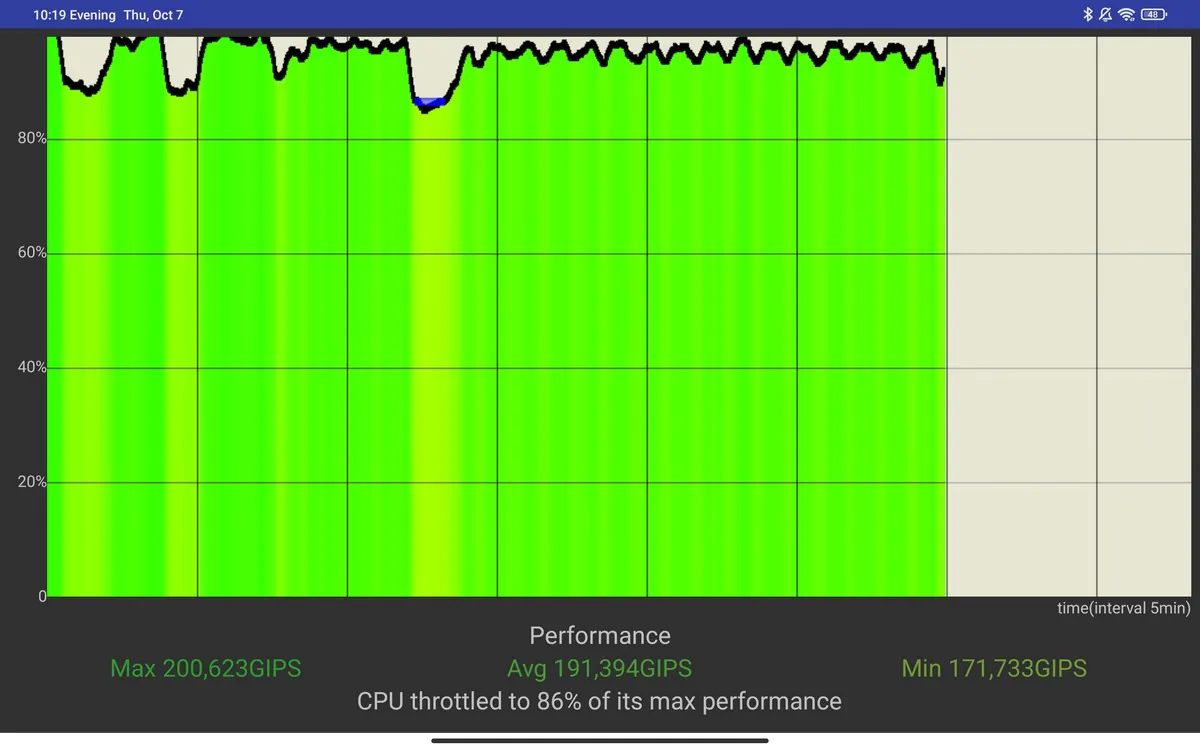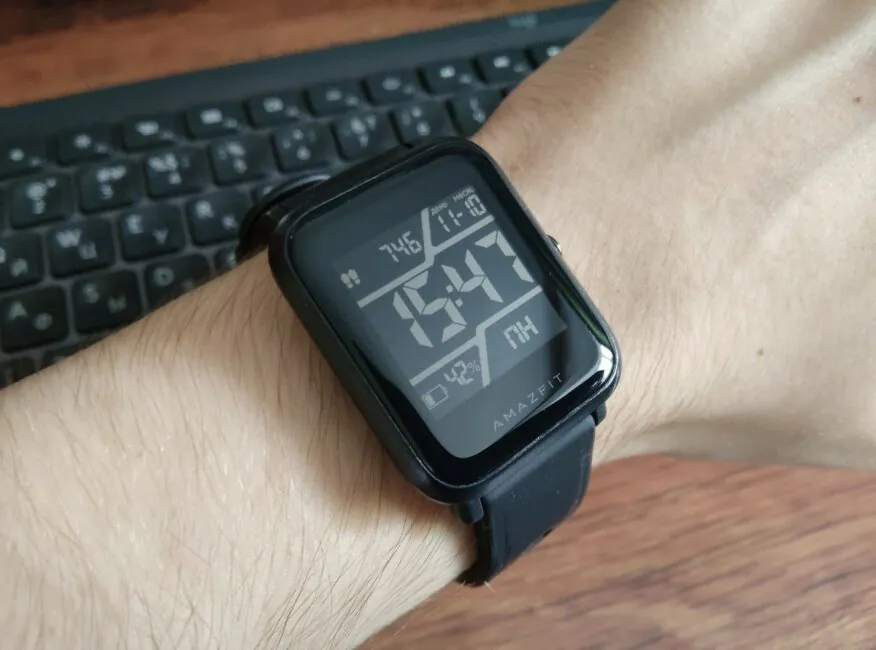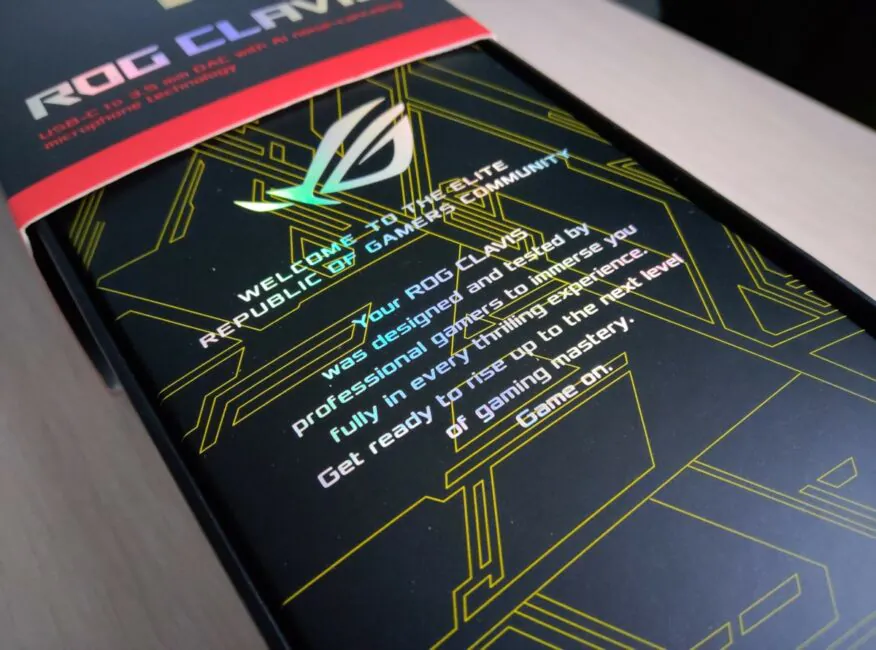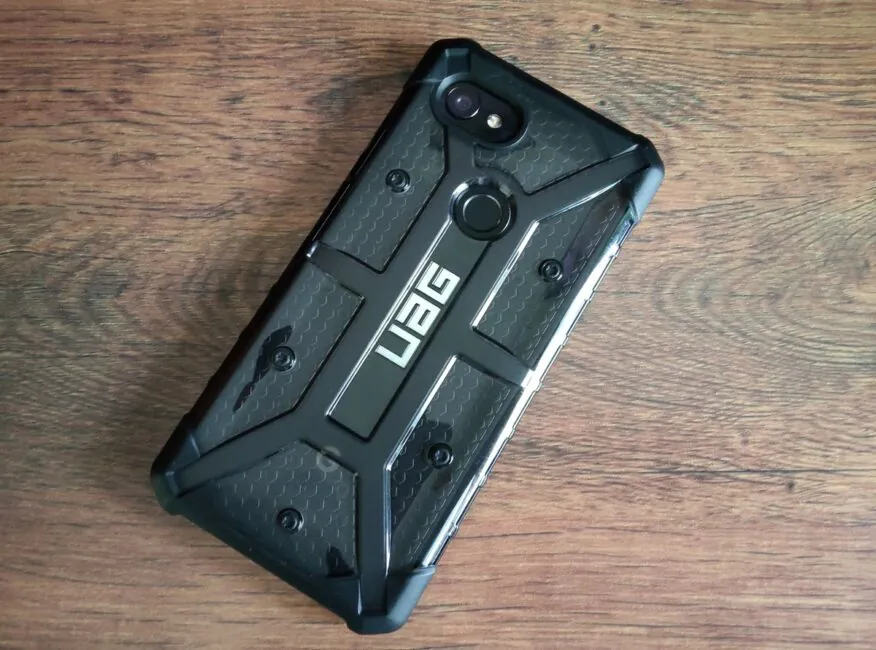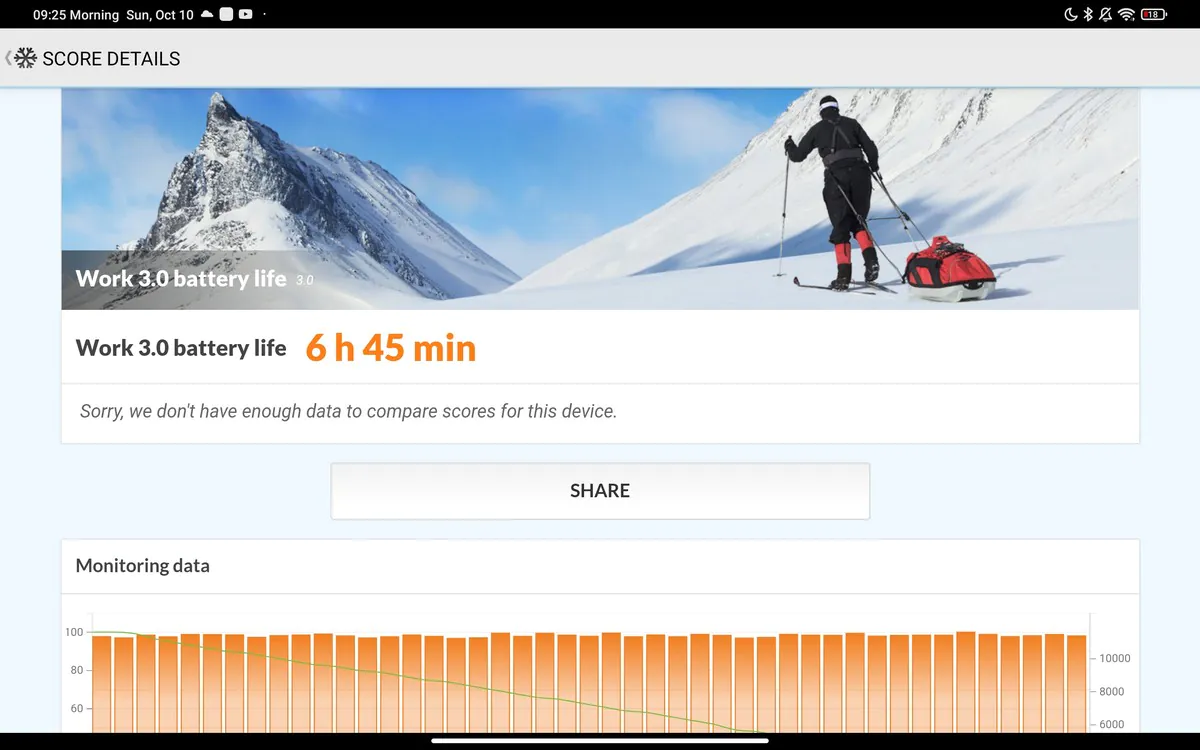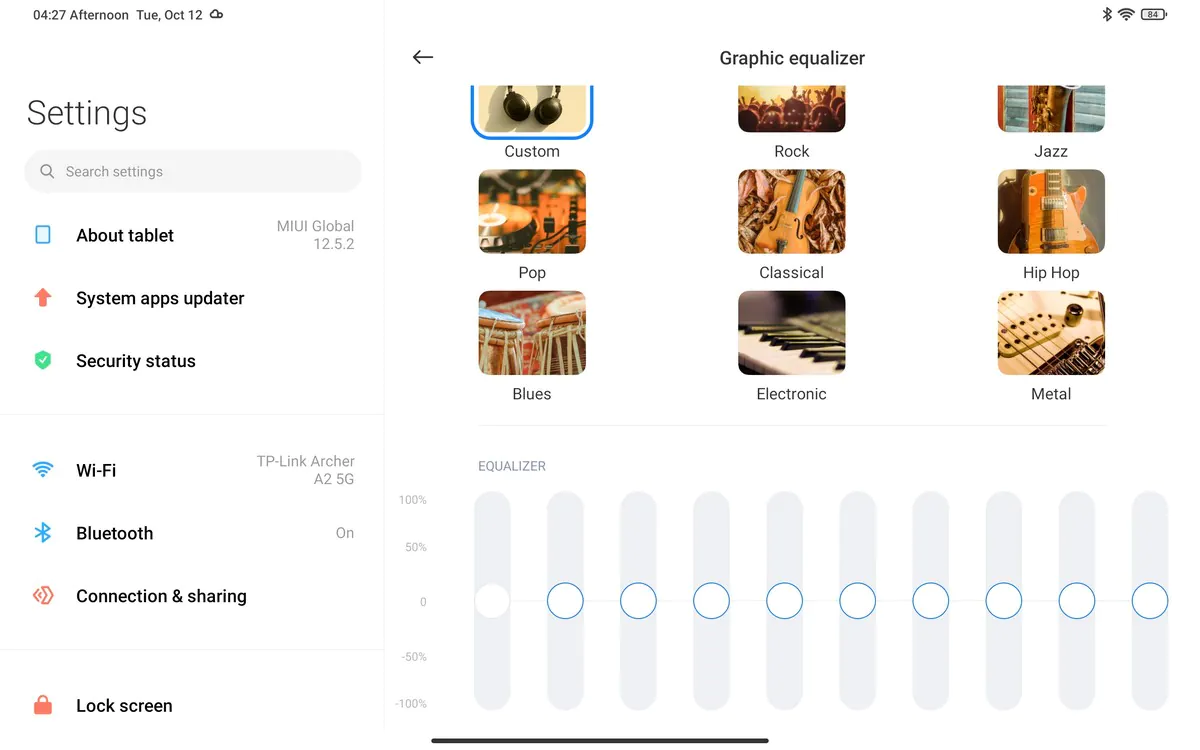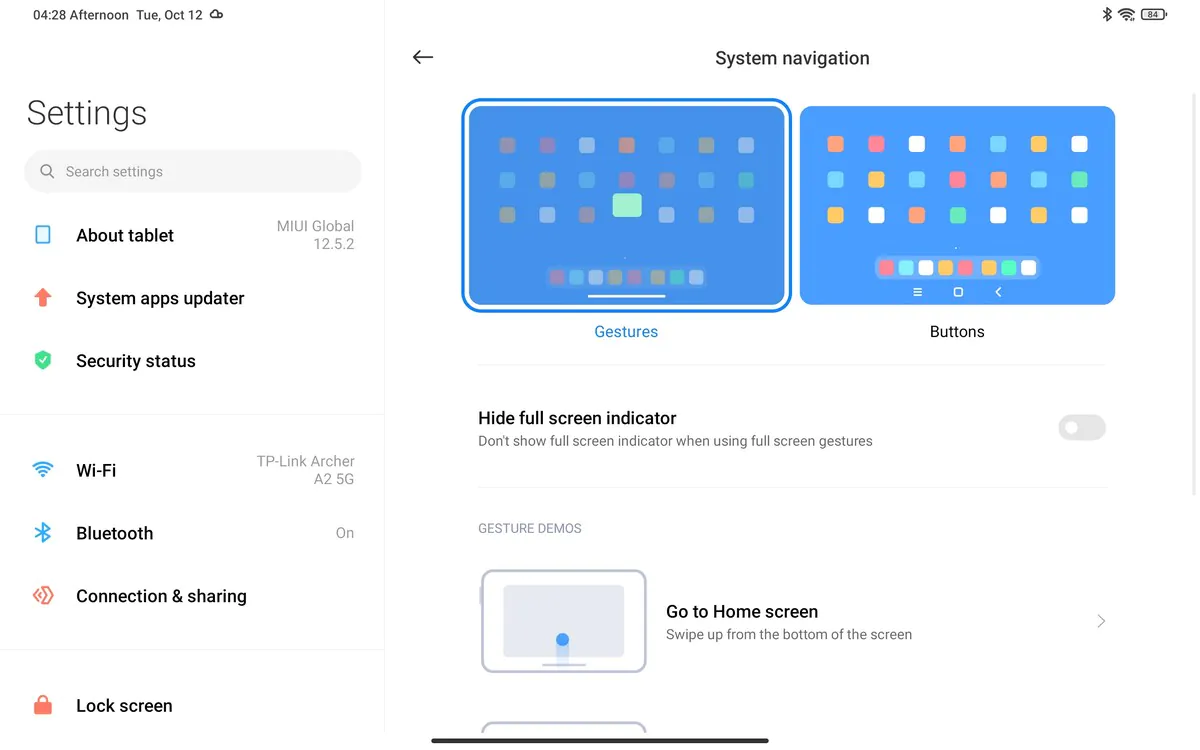© ROOT-NATION.com - Use of content is permitted with a backlink.
In August this year, along with the flagship smartphone Mix 4, Xiaomi introduced new tablets in China: the Pad 5 and the Pad 5 Pro. New devices immediately aroused genuine interest, since the company had not released tablets for three years. A month later, during the Xiaomi 11T event, the Xiaomi Pad 5 was announced for the global market. Today we’ll take a look at one of the most interesting Android tablets on the market and find out what’s so neat about it.
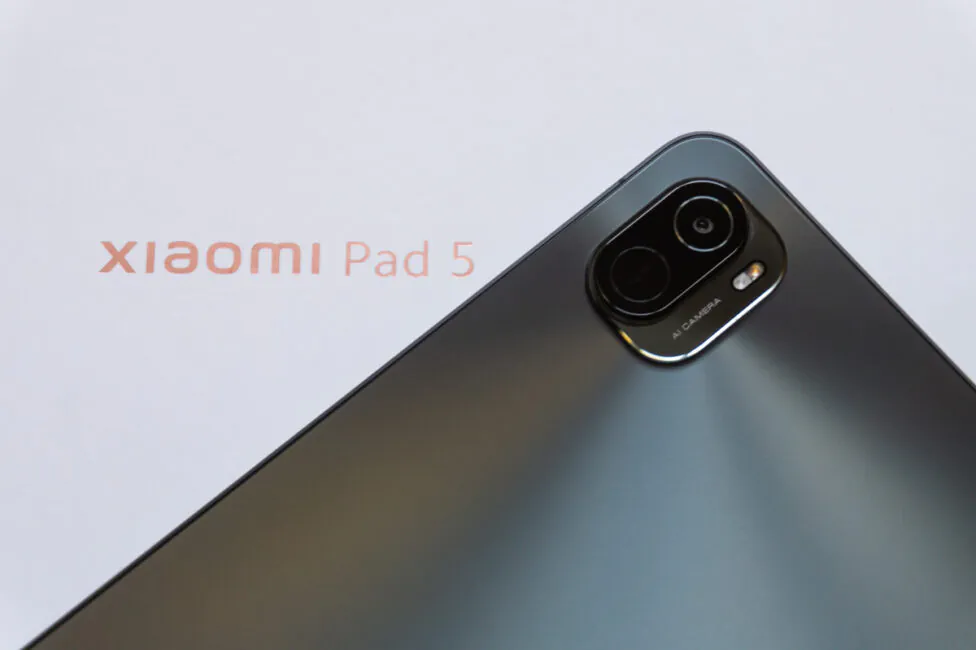
Full specifications of the Xiaomi Pad 5
- Display: 11″, IPS LCD, 2560×1600 pixels, 16:10 aspect ratio, 275 ppi, 500 nits, 120 Hz, HDR10, Dolby Vision
- Chipset: Qualcomm Snapdragon 860, 7nm, 8-core, 1 core Kryo 485 Gold @ 2.96 GHz, 3 cores Kryo 485 Gold @ 2.42 GHz, 4 cores Kryo 485 Silver @ 1.78 GHz
- Graphics Accelerator: Adreno 640
- RAM: 6 GB, LPDDR4X
- Storage: 128/256 GB, UFS 3.1
- MicroSD card support: not supported
- Wireless networks: Wi-Fi 5, Bluetooth 5.0 (A2DP, LE)
- Main camera: 13MP wide-angle module, f/2.2, 1.12µm, 24mm, PDAF
- Front-facing camera: 8 MP, f/2.0, 1/4″, 1.12μm, 27mm
- Battery: 8720mAh
- Charging: Wired 33W
- OS: Android 11 with MIUI for Pad 12.5 shell
- Dimensions: 254.69 x 166.25 x 6.85 mm
- Weight: 511 g
Positioning and price of the Xiaomi Pad 5
Xiaomi Pad 5 is the basic tablet in the current line of the manufacturer’s tablets, and unlike the advanced version of the Pad 5 Pro, the 5 don’t support mobile networks, only Wi-Fi, but there are two modifications to choose from with different storage options (either 128 GB or 256 GB). However, it is worth noting that the Pro version will not be available in every market.
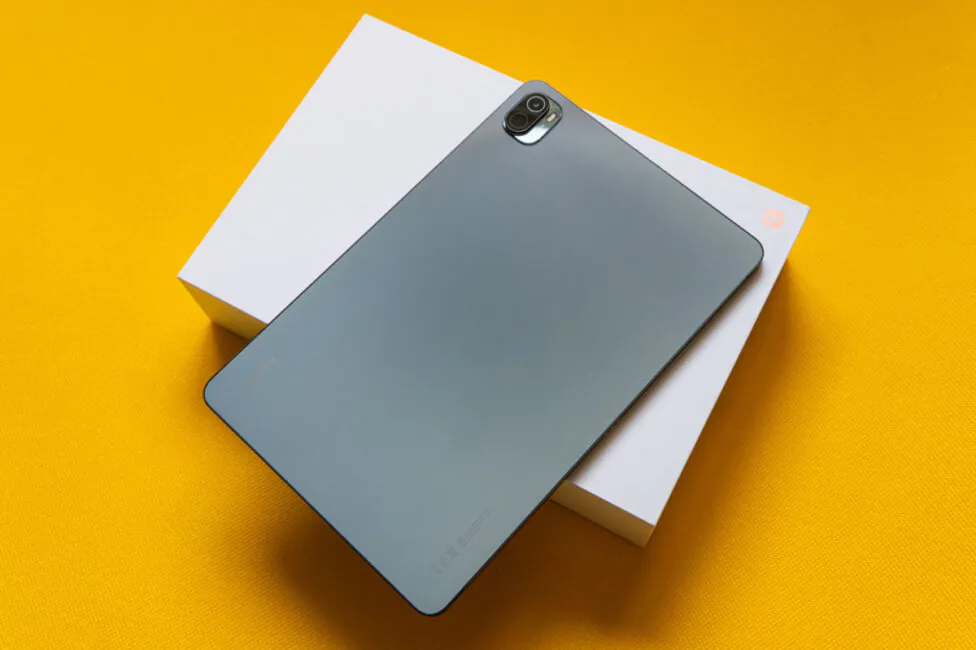
The Xiaomi Pad 5 costs about $414.
What’s in the box
The tablet comes in a large cardboard box in white with minimalistic copper accents. Inside, in addition to the Xiaomi Pad 5, you can find an envelope with documentation and boxes with a 22.5 W power adapter and a USB Type-A / Type-C cable. Interestingly, the Chinese version of the Pad 5 comes without a power adapter at all, unlike the global one, but with a Type-C/3.5 mm adapter.
Design, materials, build quality
Tablet design is definitely more difficult to experiment with than smartphone design. And yet, Xiaomi tried and to some extent even made the device look like its smartphones. On the front panel, of course, you cannot say this, but the back side resembles some models from the Mi 11 series.
In front, the Pad 5 is absolutely unremarkable, like, well, all other modern tablets. Most of the panel is occupied by the display with relatively thin bezels. It’s nice that it is symmetrical and neither side is wider. Also, it’s nice to see the rounded corners of the screen, which follow the rounded corners of the case.
At the back we immediately the unit with the camera, which is very smartphone-like. It is a slightly elongated block with rounded corners, which consists of two parts: a wide base with a flash and a narrower pedestal with the camera itself. From a distance it may even seem that there are several cameras, but the place of the second peephole is occupied by the hardly noticeable 13MP inscription.
The second design feature is the back of the design with neat iridescent effect. Once again this is a typical smartphone element, but thanks to it the tablet looks much more interesting than it would look with an ordinary monotonous color. And that’s not to mention the other available color options with different designs.
Speaking of the colors themselves. In total, there are three colors: dark gray (Cosmic Gray) as in our sample, white (White) and green (Green). True, the latter is currently exclusive to China, and only dark gray with the same iridescent effect and white with no less interesting pearlescent are available on the global market.
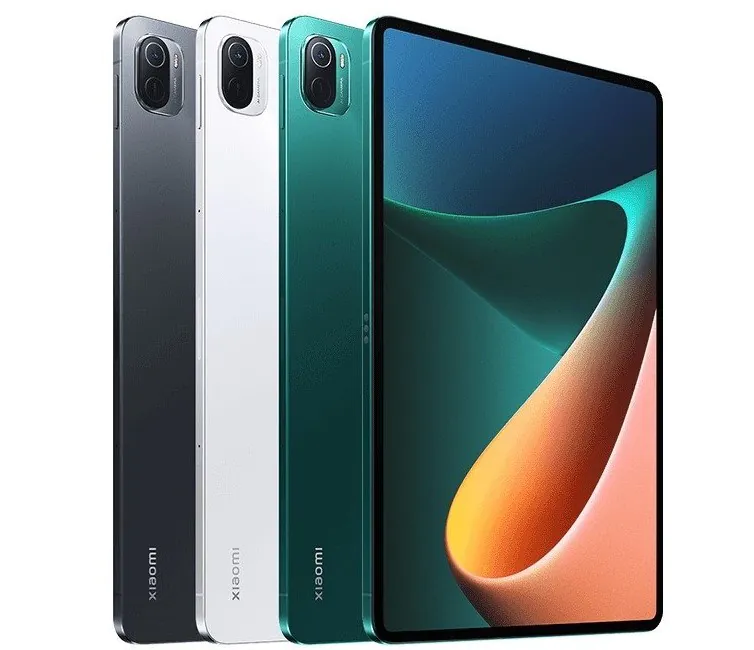
The front panel is covered with glass with a high-quality oleophobic coating. The body of the device is aluminum, with a matte finishl, and the back is covered by a plastic panel with a pleasant and practical matte finish.
The build quality is fairly good. The physical buttons are sturdy, nothing creaks. The back also does not bend under pressure, but despite the previously mentioned matte finish, it gets noticeably dirty. After a full day of use, it is completely covered with fingerprints, but they are most noticeable in the light. I suppose that they will be the least visible on the Xiaomi Pad 5 in white.
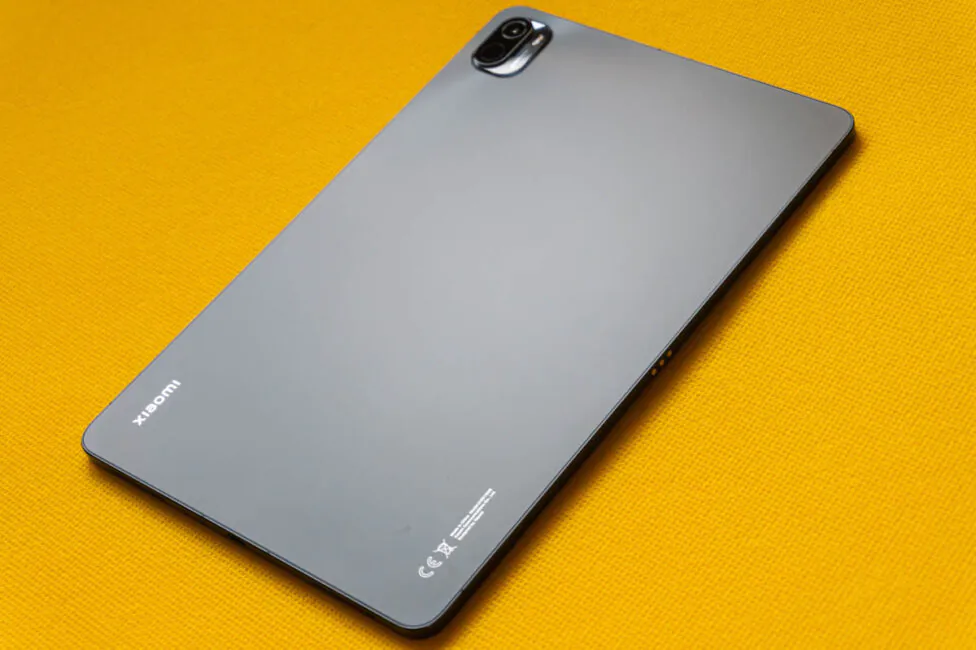
Read also: Xiaomi 11T Pro review: Flagship smartphone with super fast charging
The layout
If you place the tablet in a vertical orientation, then the front-facing camera will be in the top center. In the field on the right, closer to the top, is the light sensor.
On the right side there is a pair of dielectric inserts, two holes of unknown purpose (as it turned out, these are not microphones), a volume rocker made of metal, and in the center there is a small magnetic pad for attaching and charging the Xiaomi Smart Pen stylus.
On the left side, in addition to similar inserts for antennas, there are also three round gold-plated magnetic connectors designed for the keyboard cover. Both the case and the stylus are sold separately.
Above there is a microphone, a couple more dielectric inserts, a metal power button and two multimedia speakers. There you can also find small Dolby Vision and Atmos markings.
Below there are the same inserts, a second microphone, a USB Type-C port in the center and similar round holes, behind which two more multimedia speakers are hidden.
At the back in the upper left corner is a slightly protruding unit with one camera in a silver edging, a flash and various inscriptions. At the bottom of the back there is the Xiaomi logo and some text.
Ergonomics
Since we are dealing with an 11-inch tablet, the dimensions of its case are appropriate for such a screen: 254.69×166.25 mm. At the same time, the manufacturer managed to make the device quite thin, only 6.85 mm, and it weighs 511 g. It’s hardly a super-compact dimensions. but it’s not massive nor heavy. These are quite usual dimensions, although we have seen more compact devices with a similar screen size.
The weight of the device is distributed very well and neither side outweighs the other in either vertical or horizontal orientation. The tablet can be held equally confidently with one hand on either side and in any position.
As for the placement of physical controls, at first you will have to get used to the fact that the physical keys are placed on different edges. So, in a horizontal position, you need to make sure that the buttons are on top – this will make them easier to use. You can also cover some of the speakers on the left and right, as a result of which they will sound a little quieter.
Looking at the shape of the case, it may seem that the tablet is not very comfortable to hold in your hands and sharp flat edges will dig into your palms. Some users do note an unpleasant, sharp bevel, although I am not one of them. I can’t say that it “hurts” to hold the tablet in my hands. I was confused only by the protruding camera block, because of which on a flat surface the device can wobble when you press on the screen. To be fair, I note that this happens only when you touch the top of the screen.
The bezels are relatively thin and symmetrical. If you hold the tablet with both hands, then no accidental touches occur. But when gripping with one hand in certain situations, the finger may touch the edge of the screen a little. Although during the period of use there were no such situations.
Read also: Xiaomi Mi 11i review: the most affordable flagship on Snapdragon 888
Display
The Xiaomi Pad 5 has an 11-inch WQHD+ (or 2560×1600 pixels) IPS LCD display. The aspect ratio is 16:10, the pixel density is about 275 ppi, and the promised standard brightness reaches 500 nits. Other features include an increased refresh rate (120 Hz), as well as support for HDR10 and Dolby Vision. With the latter, the brightness of the screen, depending on the content, can exceed the standard declared value.
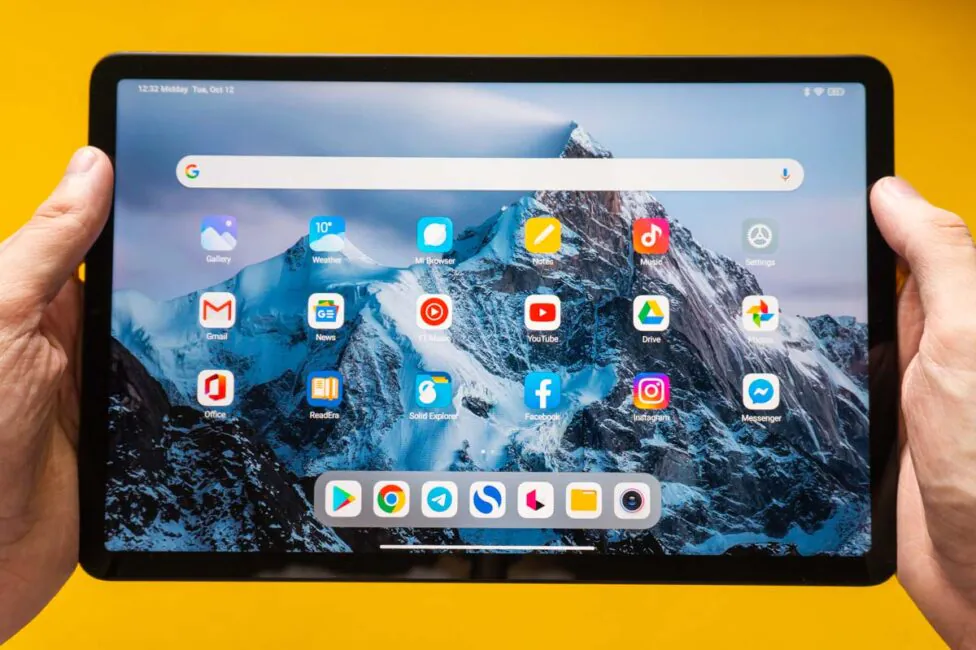
According to the manufacturer, the color reproduction of the Xiaomi Pad 5 display corresponds to the DCI-P3 color space and the display shows more than a billion colors. In real life, the display is definitely good. The brightness is entirely sufficient for indoor use and the contrast of the image is also quite good.
The color rendition will depend on the color scheme delected and can correspond to both the DCI-P3 profile and be close to the sRGB space. The viewing angles are good, without color distortion, but with the traditional IPS loss of contrast at certain angles.
The refresh rate can be either 60 Hz or 120 Hz. The latter makes the picture be smoother and more pleasing to the eye; the increased frequency works in all apps and the shell itself. As of right now the 120 Hz mode is not adaptive, and the refresh rate will not automatically drop to 60 Hz even when watching a video. Although, as we know, Xiaomi smartphones with 120 Hz displays have such a feature to save battery power. Let’s hope for future firmware updates.
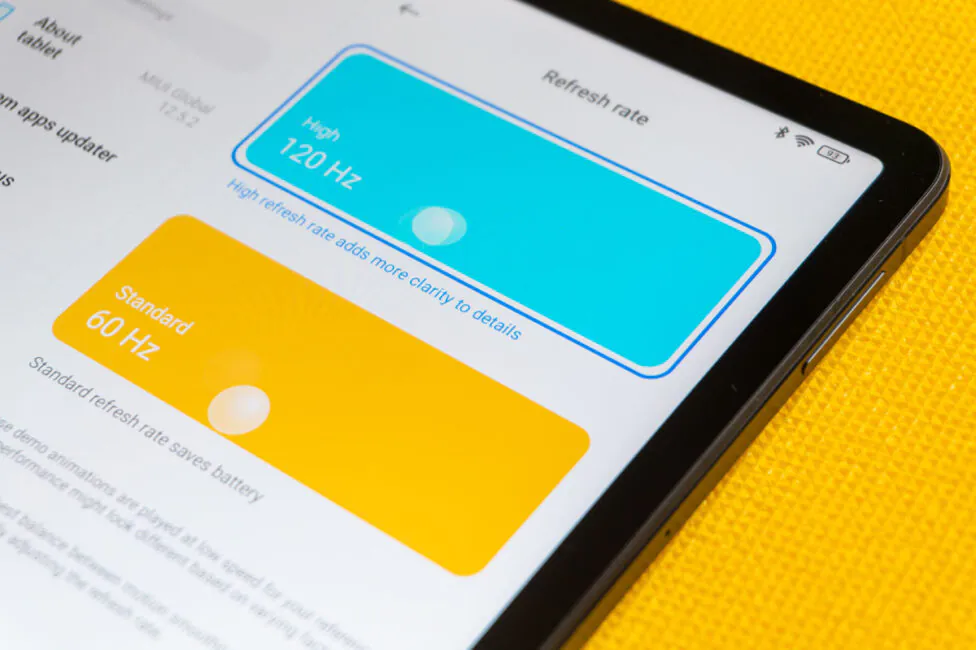
In the settings there is a light/dark mode with the ability to work on a schedule and a reading mode to reduce the blue glow. There are adaptive colors that can be adjusted according to lighting, and white balance correction is available for each of the color profiles. The rest of the options are more familiar: text size, auto-rotation of the screen and screen behavior when the device is in VR mode. You can activate other methods of activating the display: when picked up, by double-tap or with a smart case.
Read also: Xiaomi Mi 11 Lite review: an imposter?
Performance
At the heart of the Xiaomi Pad 5 is the already familiar Qualcomm Snapdragon 860 chipset, based on a 7-nm process technology. It consists of 8 cores, divided into three clusters. One Kryo 485 Gold core operates at a maximum clock speed of up to 2.96 GHz, three more Kryo 485 Gold cores operate at a clock speed of up to 2.42 GHz, and the other four cores are Kryo 485 Silver that operate at a maximum clock speed of up to 1. 78 GHz. The Adreno 640 handles the graphics. At its core, Qualcomm Snapdragon 860 is a slightly improved version of the once flagship Snapdragon 855+ with all that it implies.
In various tests, the tablet demonstrates fairly decent results. Unlike the current flagship Qualcomm chipsets, this chip is very stable under load. In 15 minutes in the throttling test, the CPU performance decreases by a maximum of 16%, and in 30 minutes by 14%. This means there’s good cooling, which is much easier to implement it in a large tablet case than in any smartphone. The tablet itself heats up slightly at the top, but you can safely continue to hold it in your hands. It will definitely not burn your palms even after a long time.
There’s the same amount of RAM in every model: 6 GB of LPDDR4X type. Quite enough for comfortable use of the device and switching between apps without constantly restarting them.

Storage memory can be either 128 GB or 256 GB. In any of the modifications, the memory type will be the same and, moreover, fast, UFS 3.1. We have a test tablet with a basic memory size, where 106.83 GB out of 128 GB will be available to the user. There’s no way of using the microSD memory card.
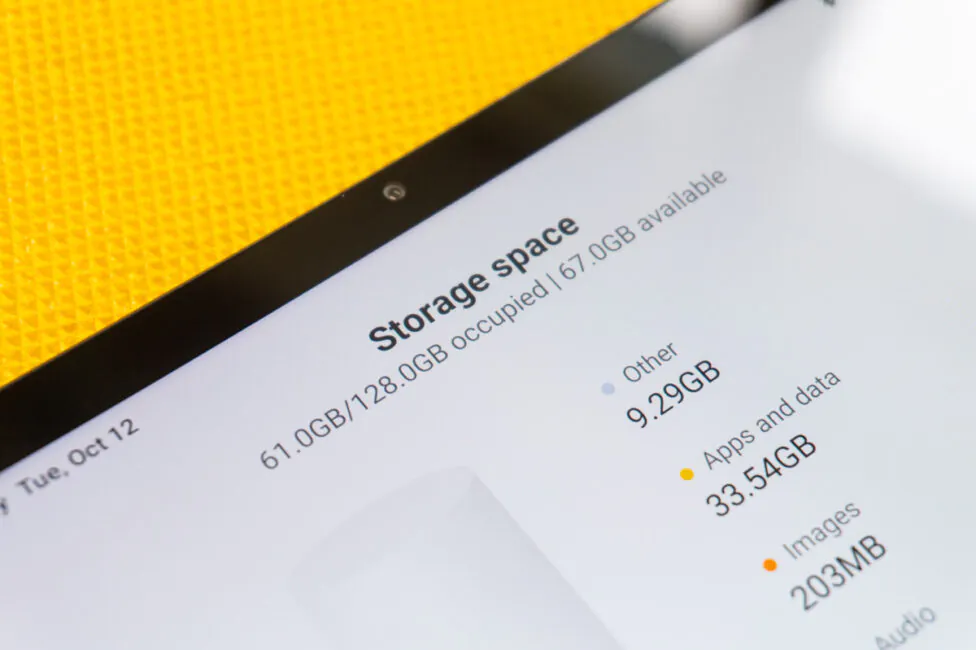
With such hardware, the tablet, as expected, has no performance problems. All apps are ast, the shell is also pretty slick. Occasionally, system animations can slowdown, but rarely and only when using the 120 Hz mode.
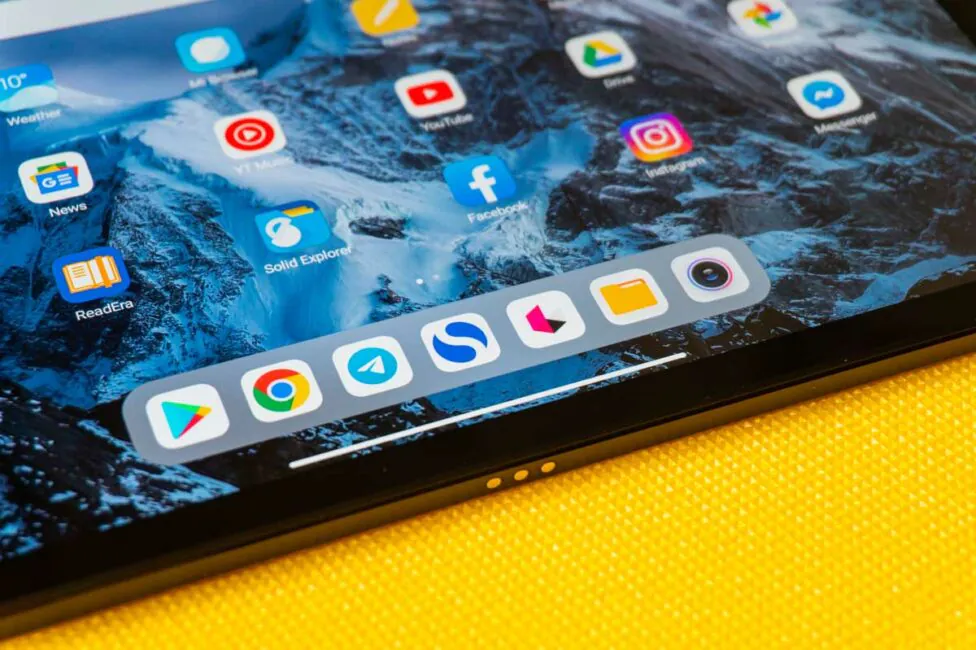
Xiaomi Pad 5 also runs games perfectly well and many demanding titles experience no issues on medium settings. Below are the average FPS measurements for several of these titles, which were captured using the GameBench software:
- Call of Duty: Mobile – very high, all effects are enabled (except rays), Battlefront mode ~ 59 FPS; Battle Royale ~ 60 FPS
- Genshin Impact – maximum graphic settings and with all effects, ~ 48 FPS
- PUBG Mobile – ultra graphics settings with 2x anti-aliasing and shadows (no reflections), ~ 40 FPS (game limit)
Shadowgun Legends – ultra graphics, ~ 60 FPS
Read also: Xiaomi Mi 11 Ultra review: Powerful Flagship to Shut Up the Skeptics
Cameras
The main camera in Xiaomi Pad 5 is represented by a single wide-angle module with a resolution of 13 megapixels, aperture of f/2.2, a pixel size of 1.12 µm, a focal length of 24 mm and PDAF.
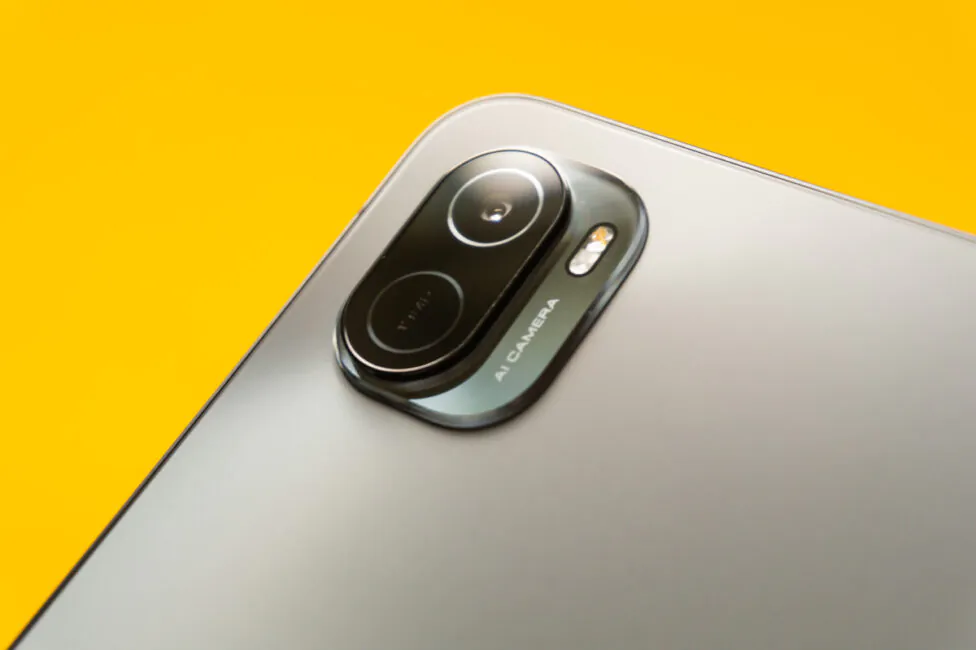
Companies have never put a special emphasis on cameras in tablets, since everyone understands perfectly well that such devices are not purchased for the purpose of taking photos or videos. The presence of the module should rather be regarded as an opportunity to snap something if suddenly there is no smartphone at hand. As a last resort, you can use it to shoot documents. That is why often these cameras do not reach the level of modern budget smartphones.
In the case of the main camera of Xiaomi Pad 5, no miracle happened either, but if you compare it with cameras in other tablets of a similar level, it’s not the worst. During the day, outdoors or indoors with good lighting, it shoots quite well: you can count on normal detail and sharpness, natural color rendition and a relatively wide dynamic range. In low light, aggressive noise reduction appears, so that all small details are lost and there are problems with the white balance. However, in very bad lighting conditions, you can use the night mode. Not every tablet has it, but the Pad 5 is able to make much brighter and better quality shots thanks to it.
MORE PHOTOS IN THE ORIGINAL RESOLUTION
The tablet is capable of recording video in maximum resolution up to 4K at 30 FPS. There is also 1080P, albeit with the same 30 FPS, and in the end it turns out that the tablet cannot shoot at 60 FPS in any of the modes. If we talk about the quality of the videos, then it is average. There is some kind of electronic stabilization even at maximum resolution, which is nice, and correct color rendition when shooting outdoors during the day. In other conditions, the results are much worse, which is not surprising.
The front camera module has the following characteristics: 8 megapixels, f/2.0, 1/4″, 1.12µm, 27 mm. In n ideal conditions it’s fine: there are details on the face and correct color reproduction. With the slightest deterioration in lighting conditions, as expected, there is too much noise, and especially in the shadows. Such a camera is more suitable for video calls than for other purposes. It can shoot video in 1080P at 30 FPS, but there is a rolling shutter and with sudden movements the picture deteriorates. It’s okay for video calls.
The camera app is traditional for the MIUI shell, but very stripped down in terms of various modes for photos and videos for obvious and justified reasons. In addition to the standard ones, there is the already mentioned night mode, as well as documents and video clips. The UI on the big screen doesn’t look very user-friendly, but that’s another story altogether.
Unlocking
The Xiaomi Pad 5 supports unlocking with your face and that’s about it. For that it uses the front-facing camera. Not the safest method, but it’s convenient. The method works well, especially in good ambient light. Unlocking is so fast that the lock screen does not even have time to appear. The stability is also quite high. As the ambient light deteriorates, the response speed also decreases.
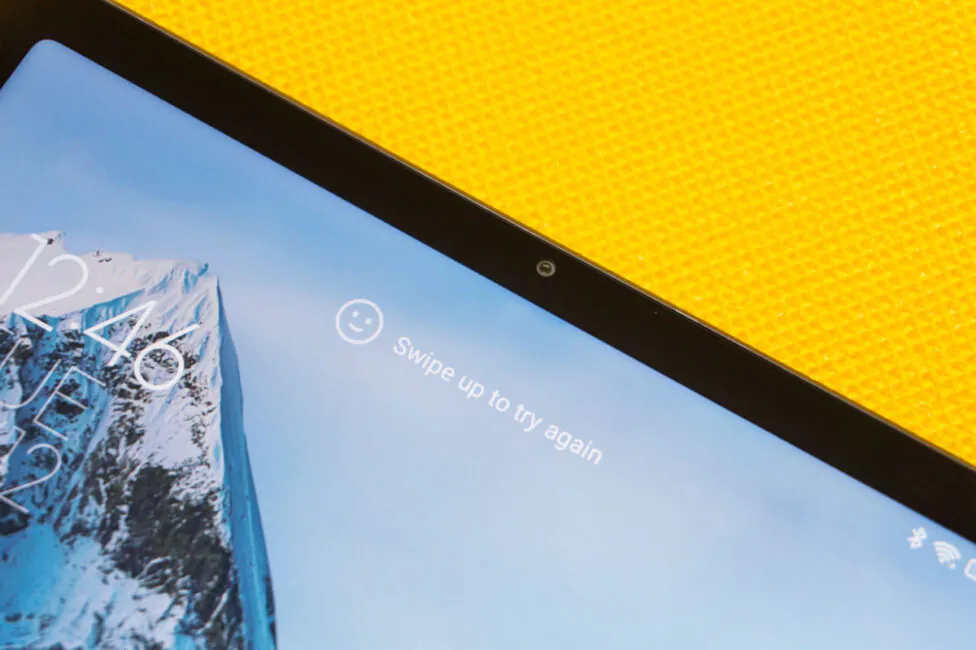
But the method does not work in complete darkness when you have to enter the password manually, since there is no option of automatically increasing the brightness of the display. There are not very many additional settings either: it is possible to stay on the lock screen even after the check, hide notifications until you are recognized, and recognize immediately when the screen is turned on. In total, you can register two different faces, and this is convenient if several people use the device. Although the usual capacitive fingerprint scanner in the power button would definitely come in handy.

Read also: Xiaomi Mi Smart Band 6 review: A new fitness tracker with SpO2 Sensor
Battery life
The battery in Xiaomi Pad 5 is quite large, 8720 mAh. The manufacturer promises that the tablet’s charge will last for a whole day of use, regardless of whether you are working, studying or playing. Examples include more than 5 days of music playback, at least 16 hours of video playback, or over 10 hours of gaming on a single charge. In theory, it sounds very good, but in practice there are just too many other factors.
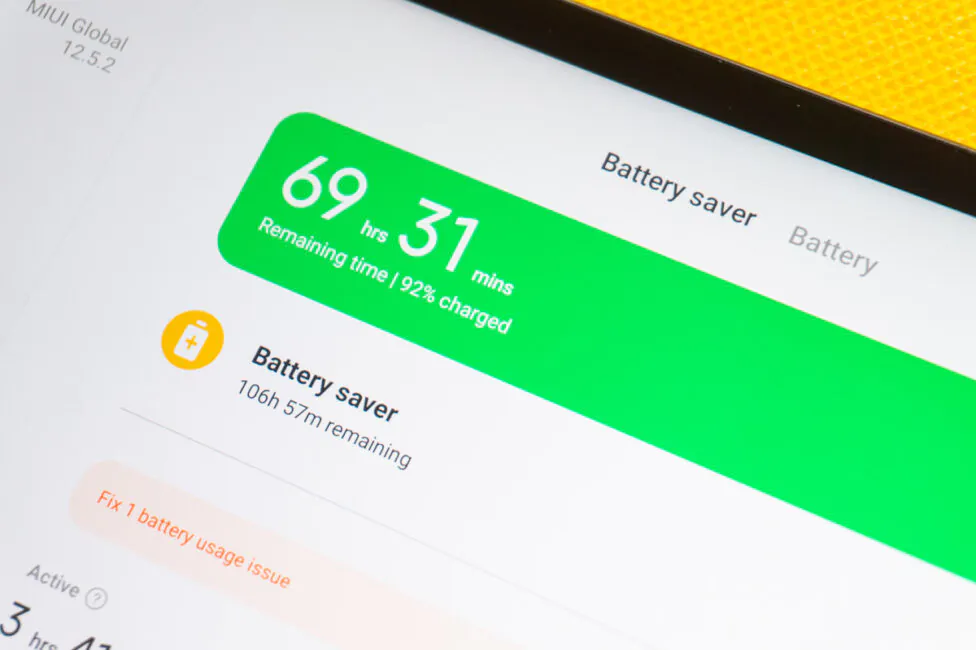
Still, there are many scenarios for using the tablet. For reading it’s amazing, but gaming will shorten the battery life by half or so. Also, don’t forget about the Pad 5’s refresh rate. Obviously, in 120 Hz mode, the device will discharge slightly faster than in 60 Hz mode. Overall, the tablet can survive a lot, so in that case it’s quite impressive.
I prefer 120 Hz, and this way I mainly use a browser, a text editor, watch videos, listen to music and play some heavy games. Each activity takes at least 1 hour, and in this format, the device survives for one and a half to two days with a total of 6.5-7 hours of active screen. If the tablet is used mainly for the consumption content, then the numbers can reach 12 hours, which is actually very good. We also tried the PCMark Work 3.0 test and with the maximum screen brightness the Xiaomi Pad 5 managed to hold out for 6 hours and 45 minutes.
The Pad 5 itself supports up to 33W wired charging, although it was originally thought to be a feature exclusively of the Chinese version of the tablet. One way or another, a 22.5 W power adapter is included with the global version.
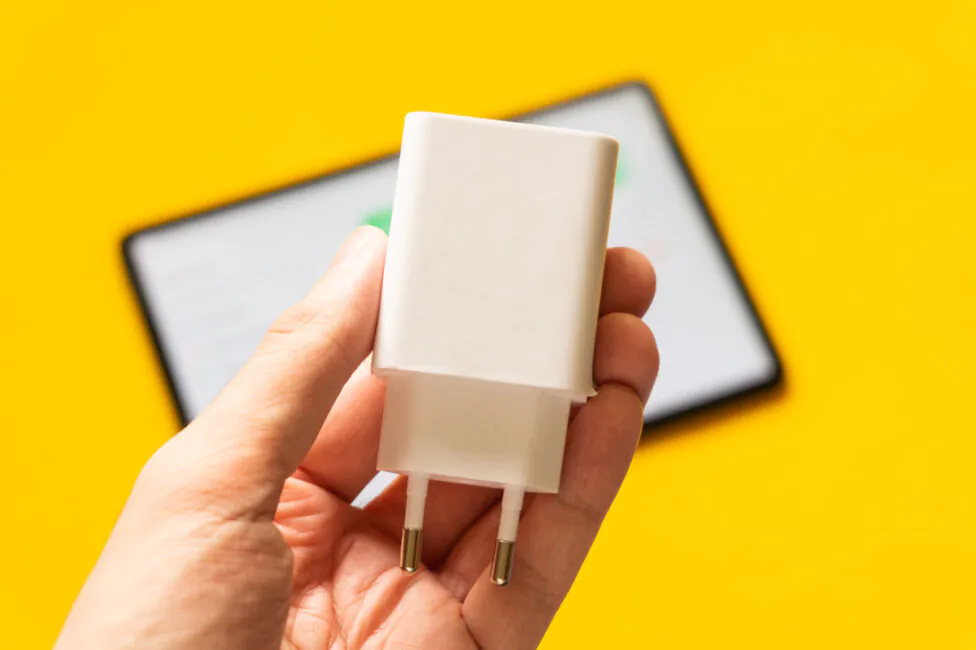
Charging is not very fast, and the device fully charges in about 2 hours. Although for a battery of this size, this is quite alright. The 33 W adapter is about 20 minutes faster. Below are detailed measurements of the speed from the standard bundled 22.5 W adapter:
- 00:00 — 8%
- 00:30 — 34%
- 01:00 — 59%
- 01:30 — 85%
- 01:55 — 100%
Sound and connectivity
The sound subsystem of the Xiaomi Pad 5 is represented by four speakers at once with support for Dolby Atmos technology, as well as Hi-Res Audio certification. And the tablet sounds best with Dolby Atmos: the sound is very loud and encompassing. There is a special emphasis on the low frequencies, while the mids and highs are less clear. And nevertheless, even at the maximum volume level, there is no distortion and in I would characterize the sound as quite good. It’s suitable for both listening to music and watching movies.
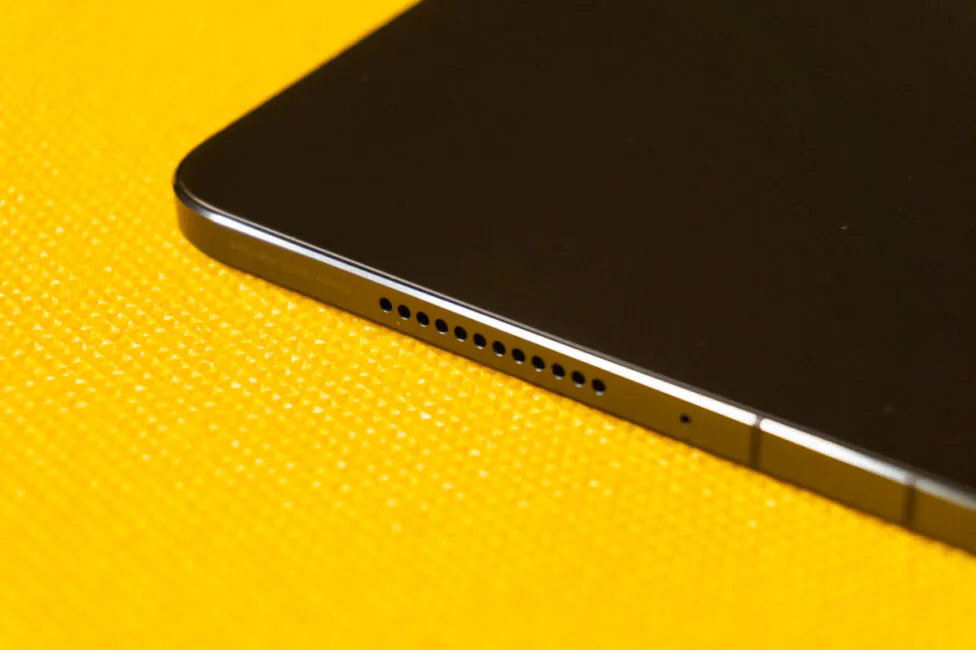
In wireless headphones, everything is fine too thanks to Dolby Atmos support with several profiles and a graphic equalizer. Alas, the tablet does not have a 3.5mm audio jack, so wired headphones will have to be connected via an adapter. There are Mi Sound effects with sound adjustment for specific headphones, but for them to work, you will have to turn off Dolby Atmos.
There are few wireless modules in the tablet: there is only dual-band Wi-Fi 5 and a Bluetooth 5.0 module (A2DP, LE). They work great: the network is stable and various Bluetooth devices do not disconnect, be it headphones or a keyboard with a mouse. As I noted at the very beginning of the review, there is no version of Pad 5 with support for cellular networks, and there is no GPS module on board either.
Read also: Xiaomi Mi 11 Review: True Flagship
Firmware and software
The tablet runs on MIUI for Pad 12.5 shell based on Android 11. By and large, this is the same MIUI that is used in smartphones. We have already talked about it many times, although there are some differences from MIUI for smartphones. These are not only convenient functions for a tablet, but also simplifications. For example, to the left of the home screen, there is no MIUI hub or a feed with recommended news from Google. In addition, there are noticeably fewer customization tools in the tablet version of the shell: there is no app with themes and animated wallpapers. Some third-party apps look fine on the tablet only in horizontal orientation, but you can blame Android, not of a specific shell.
From the new items in the parameters, you can find a menu for adjusting the stylus and keyboard. In the tab with stylus settings, you can read about the buttons on the stylus which can be used to quickly create and edit screenshots, as well as about handwriting recognition. From the keyboard menu, you can change the pointer speed and view the available keyboard shortcuts.
The mini window feature lets you launch one app in a relatively small floating window on top of another window. The window itself can be moved around the screen as you like, and when the main application is minimized, it becomes even smaller and attaches to the corner of the screen. Moving the floating window to the left or right will split the screen in half with the main running application, but only if that app supports split screen. However, it is no longer possible to open three apps at the same time, two with a split screen and one in a floating window. It’s weird because something similar was shown on the promotional materials. Maybe this feature will appear with the update.
Verdict
The Xiaomi Pad 5 is definitely one of the best deals in its price segment. This is a good 11-inch tablet with the recognizable design, a 120 Hz display, stable and powerful hardware, good battery life and quite good stereo speakers. It’s great for multimedia and games, and if you buy a stylus and a keyboard, it will also do for some office tasks.
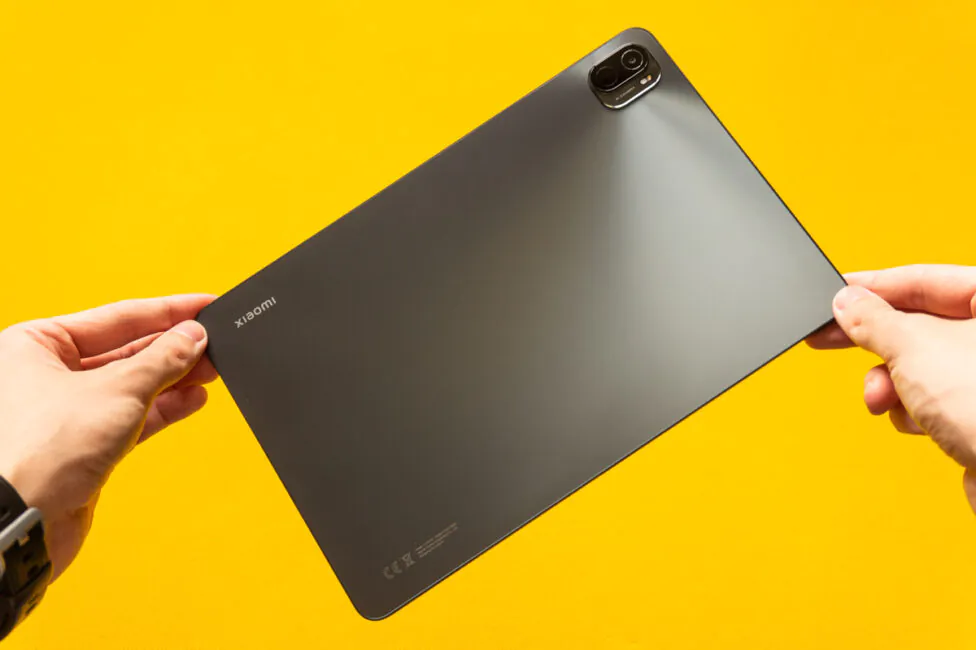
However, due to the lack of a GPS module and a version with cellular network, it is not a universal tablet for every type of user. Some users may also be frustrated by the lack of a 3.5mm audio port and a fingerprint scanner. Otherwise, it is an excellent balanced tablet without serious flaws.
- Huawei MatePad 11 review: Testing the first HarmonyOS tablet
- Lenovo Tab P11 review: Tablet with Potential?

Subscribe to our accounts:


